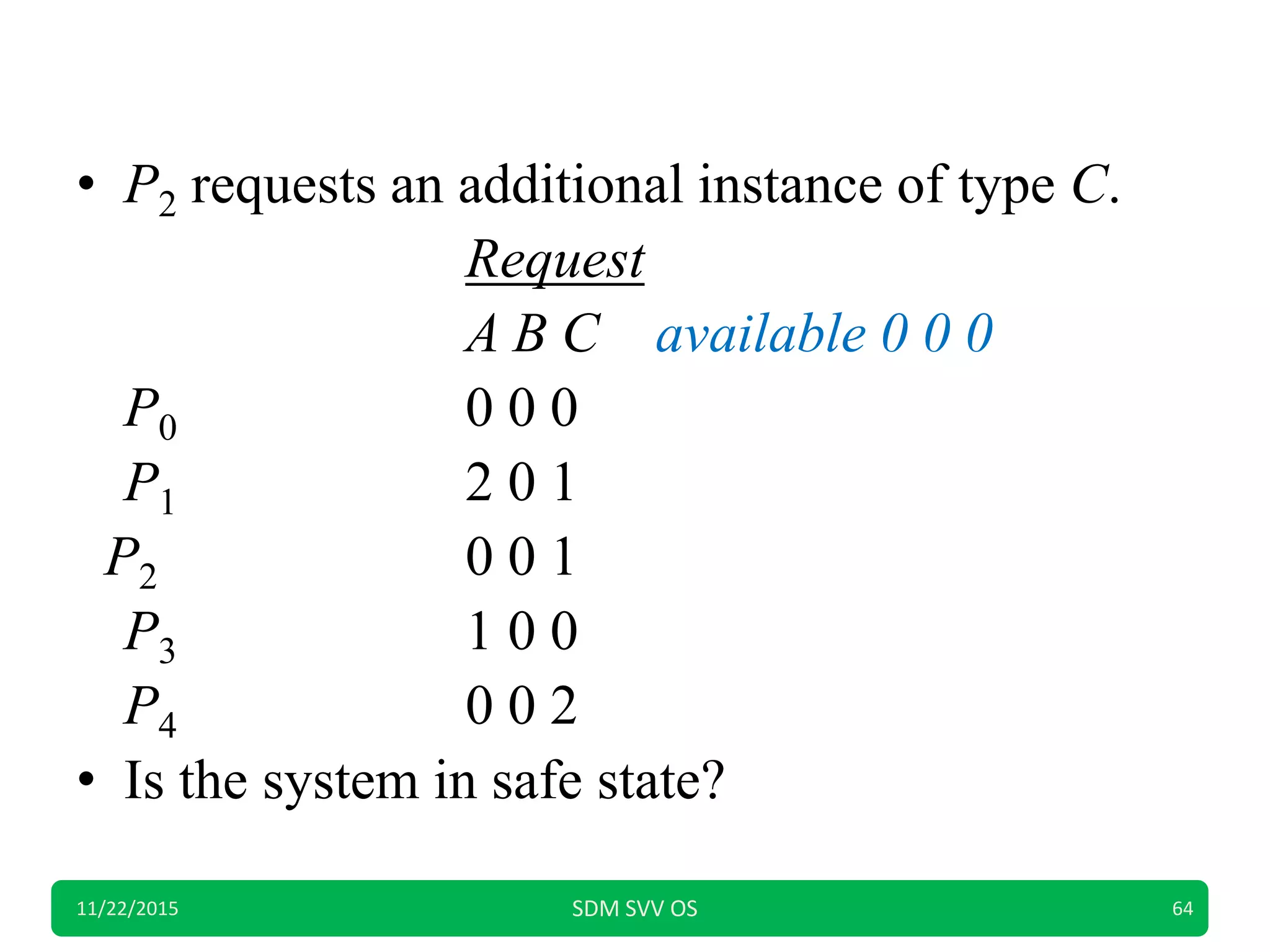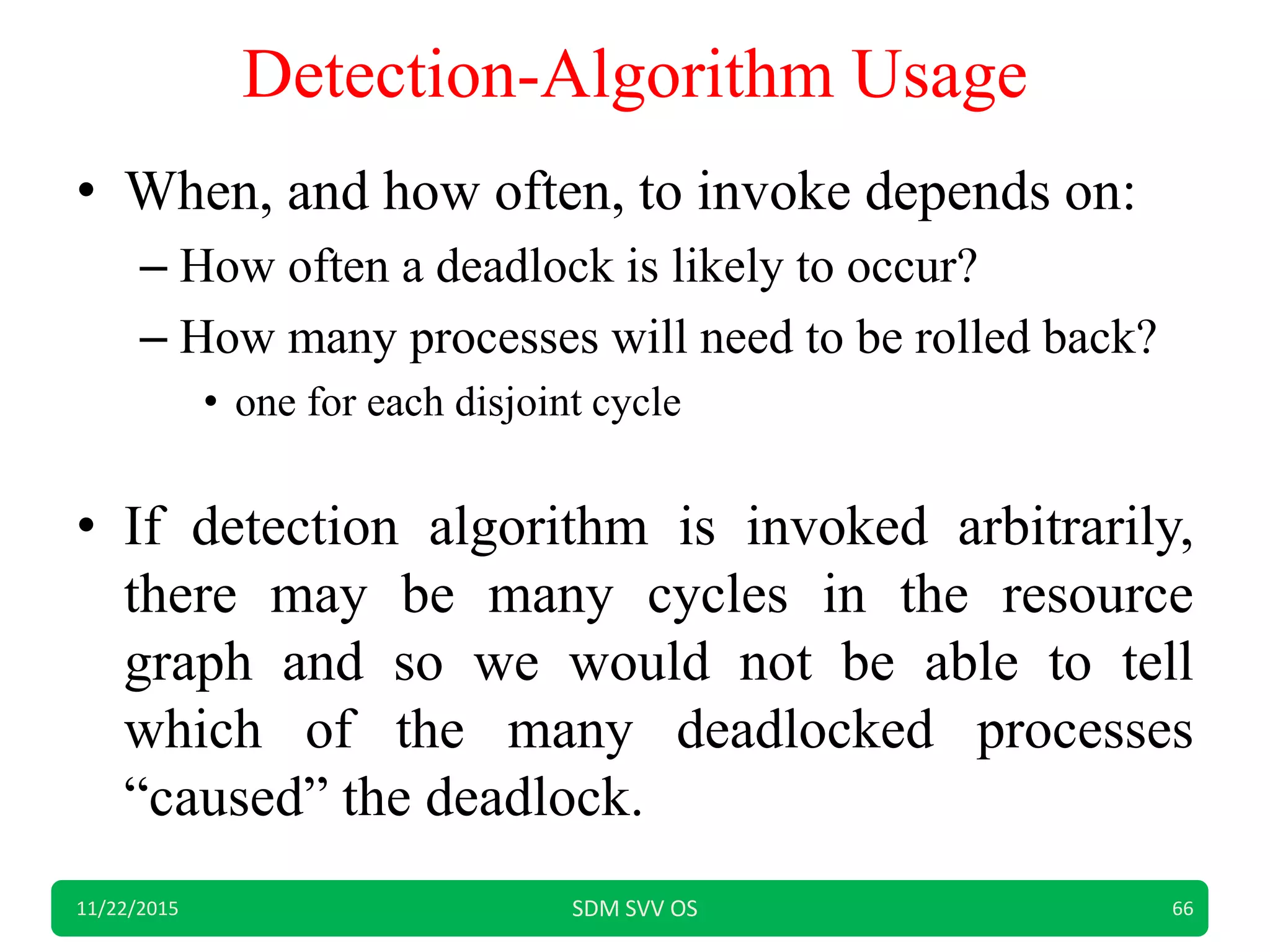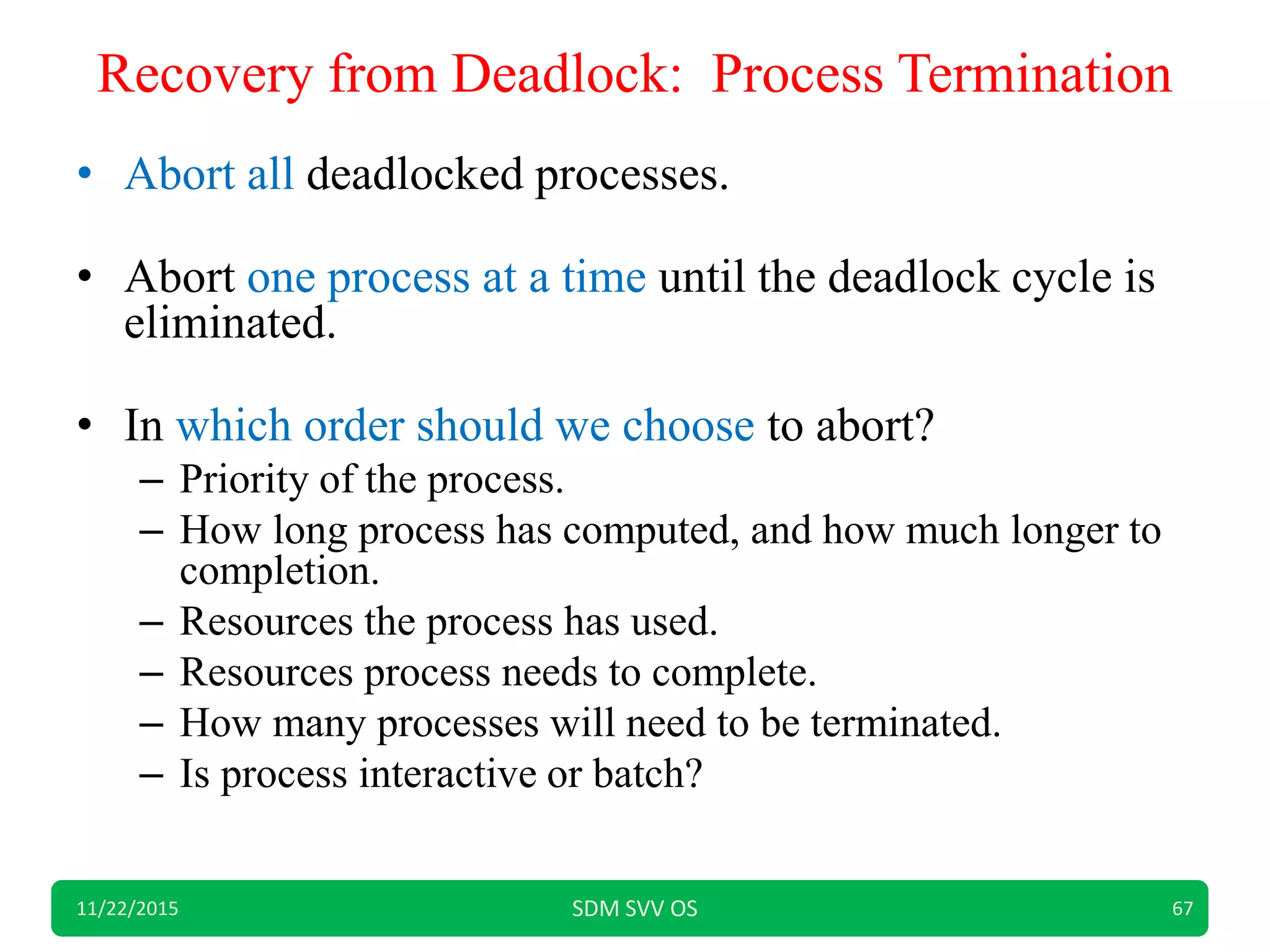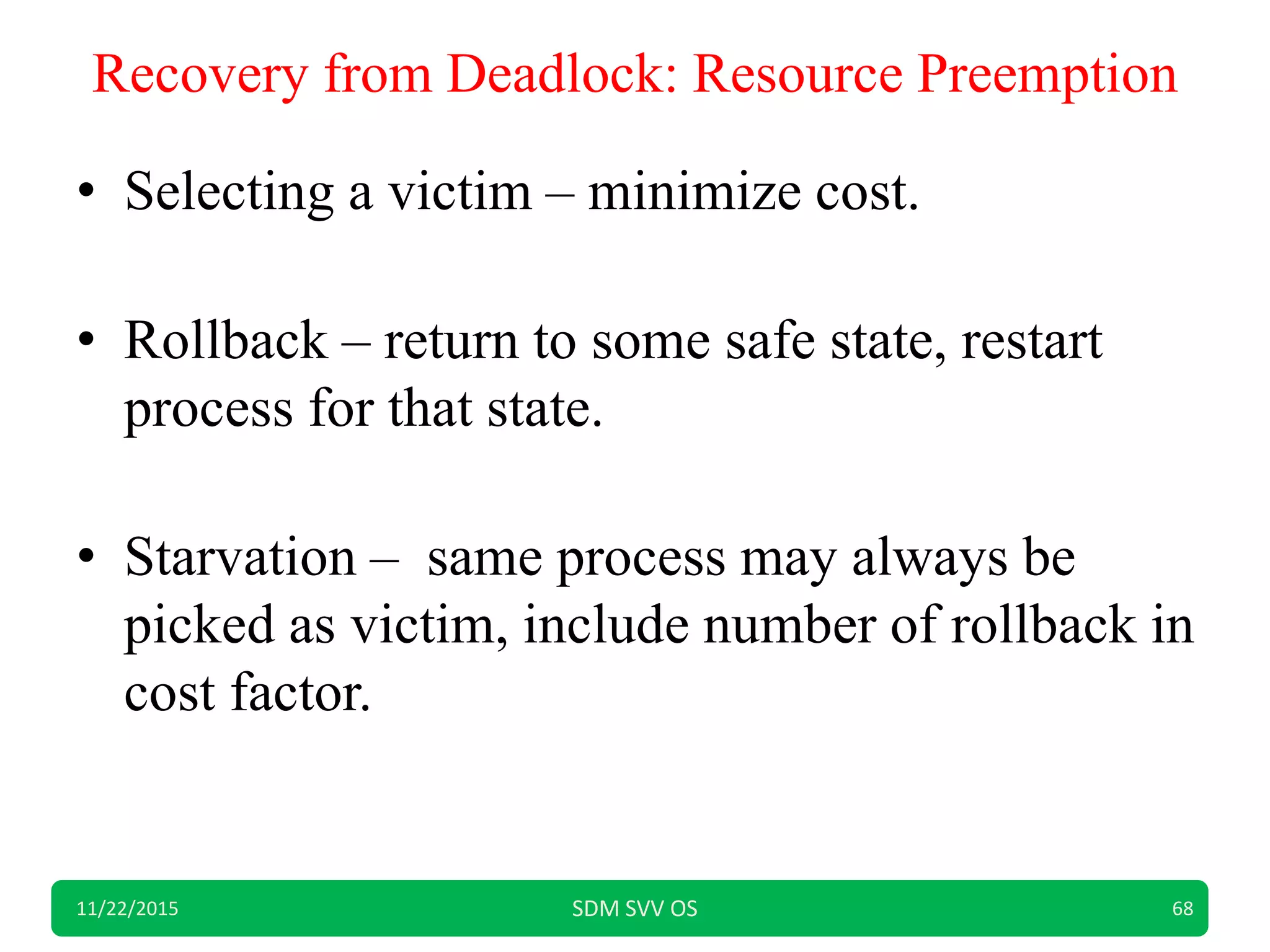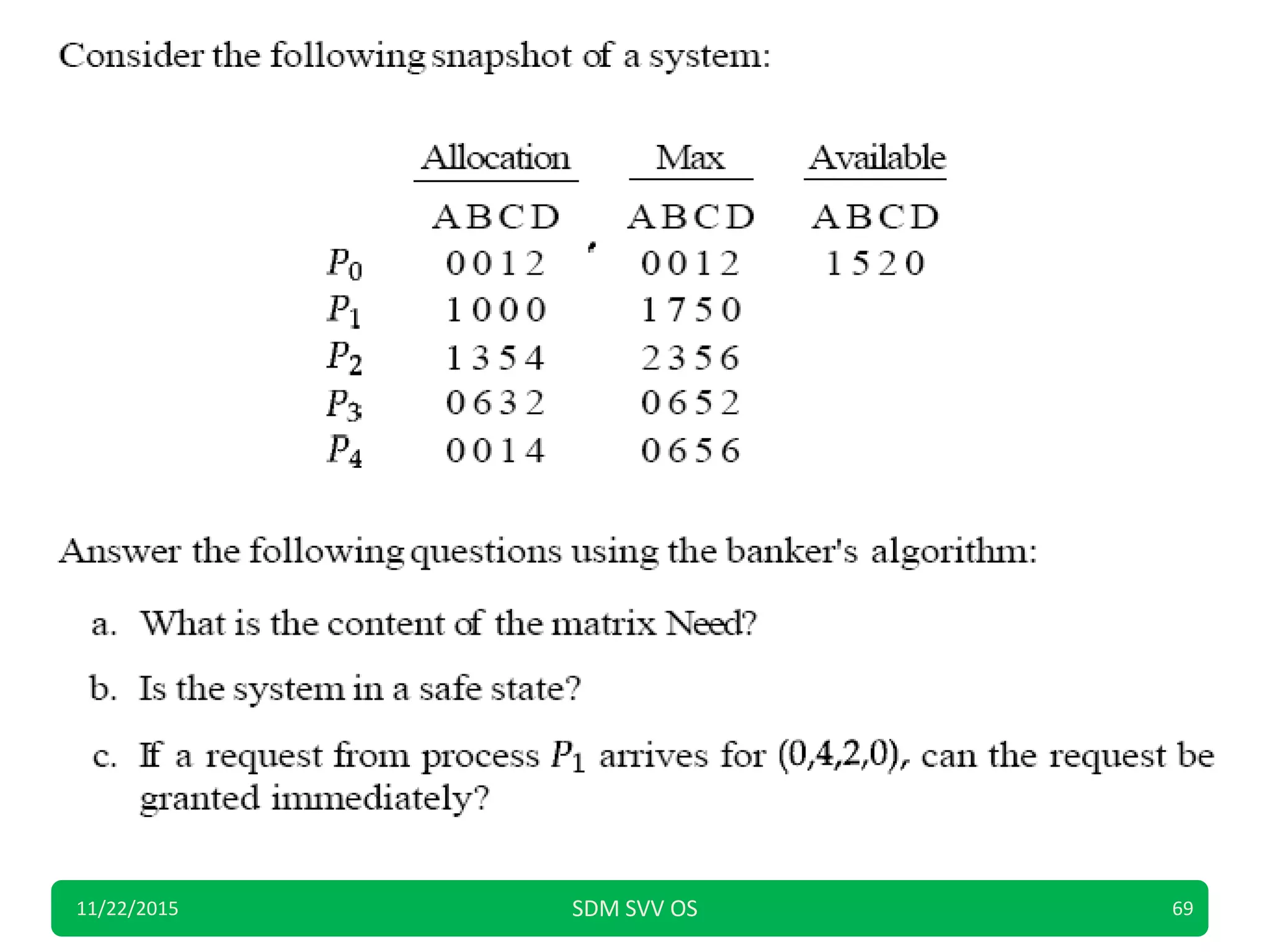The document discusses deadlocks in operating systems. It begins by providing examples of deadlock situations and defining the four conditions required for deadlock: mutual exclusion, hold and wait, no preemption, and circular wait. It then describes methods for handling deadlocks, including deadlock prevention, avoidance, detection, and recovery. For prevention and avoidance, it discusses specific algorithms like the banking algorithm and resource allocation graphs. The document provides examples and diagrams to illustrate deadlock states and algorithms.
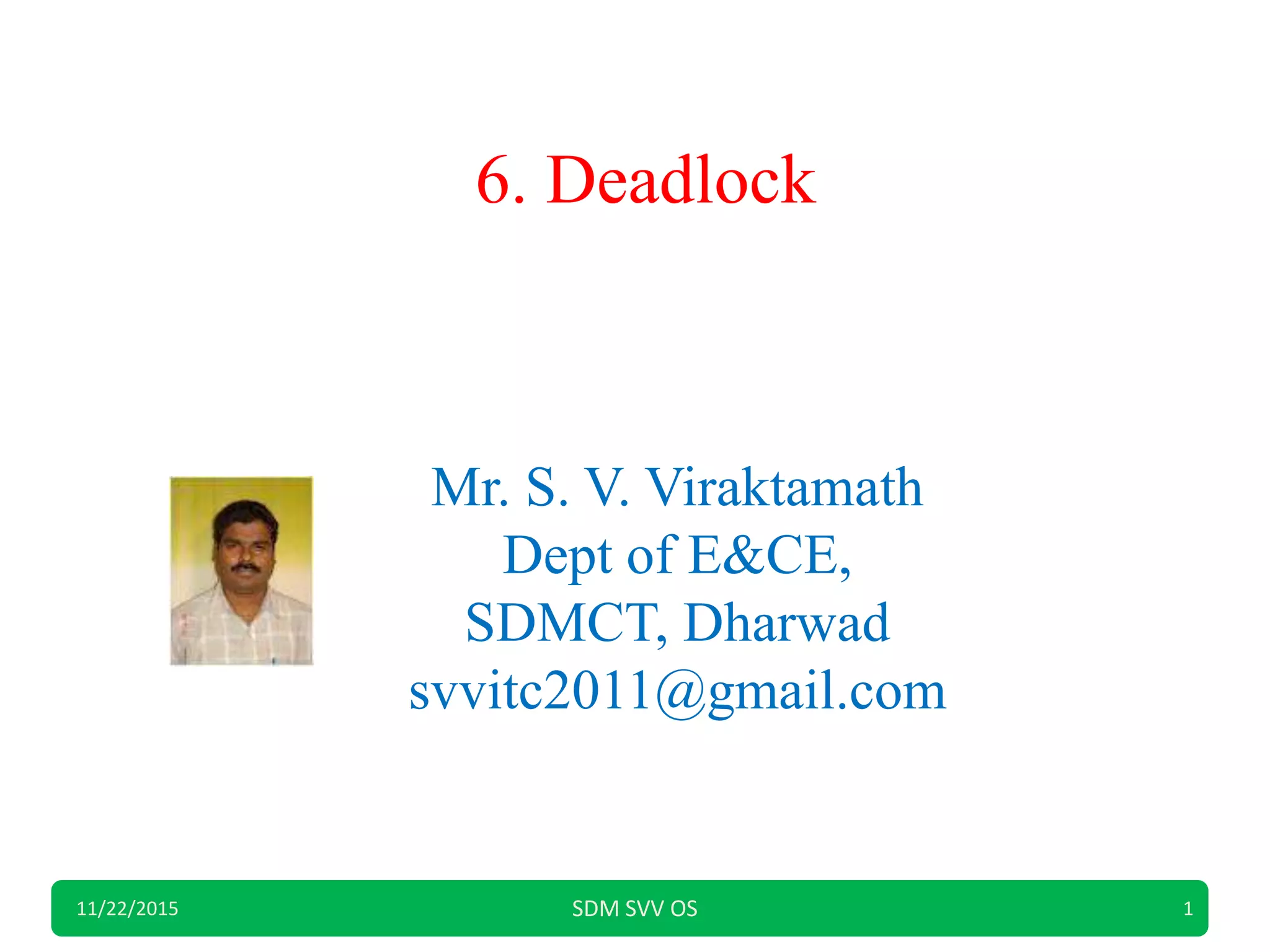
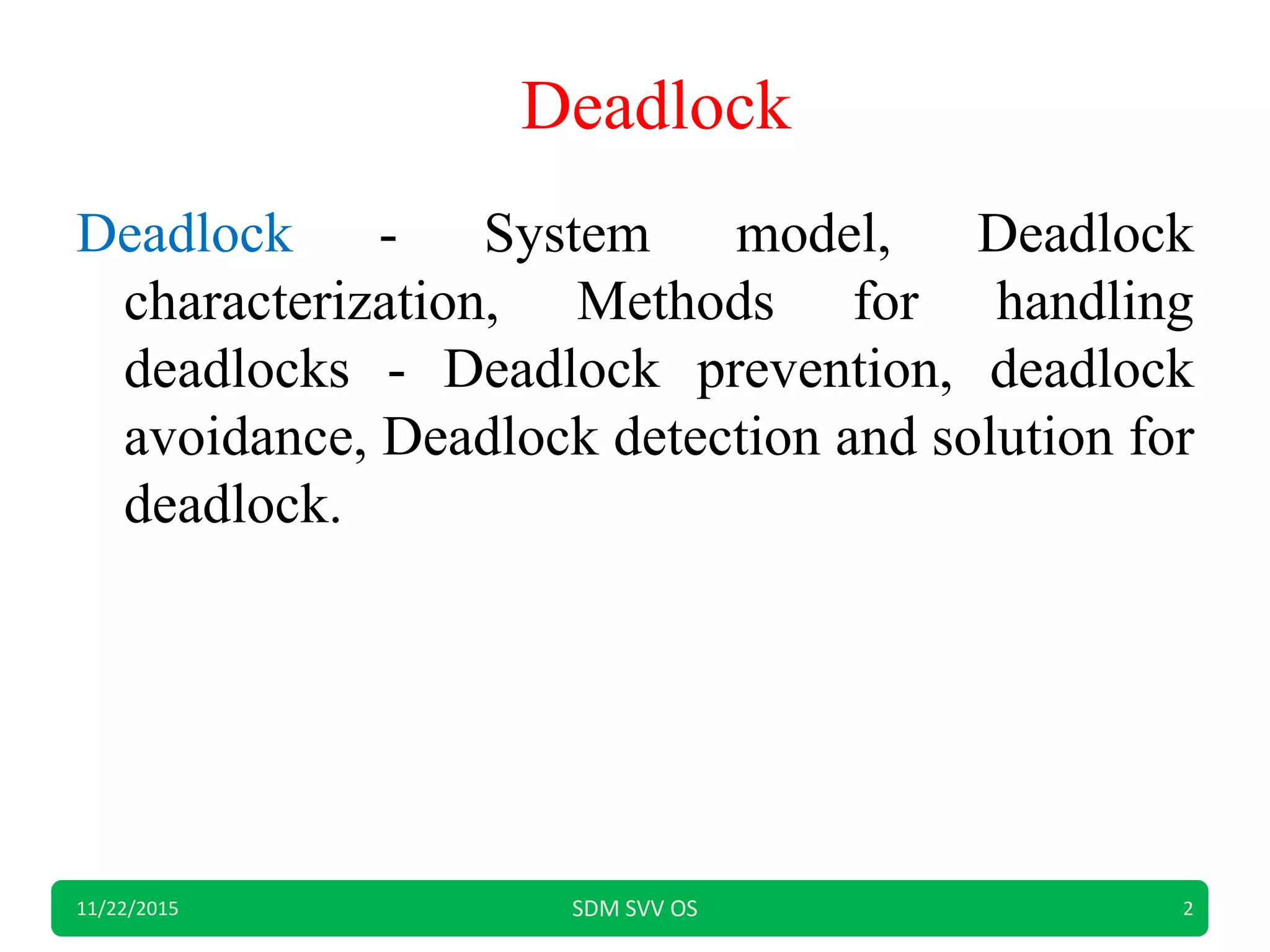
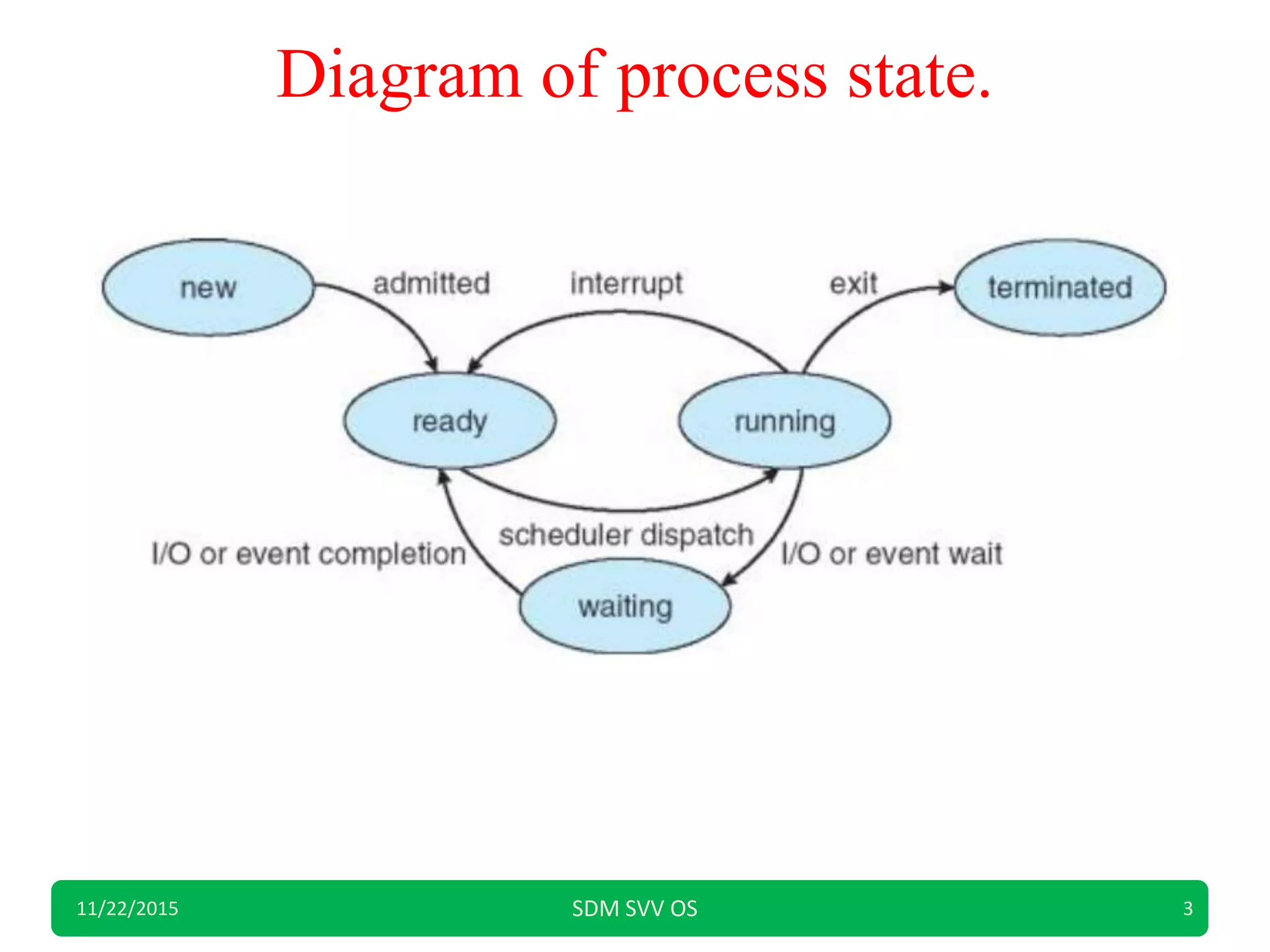
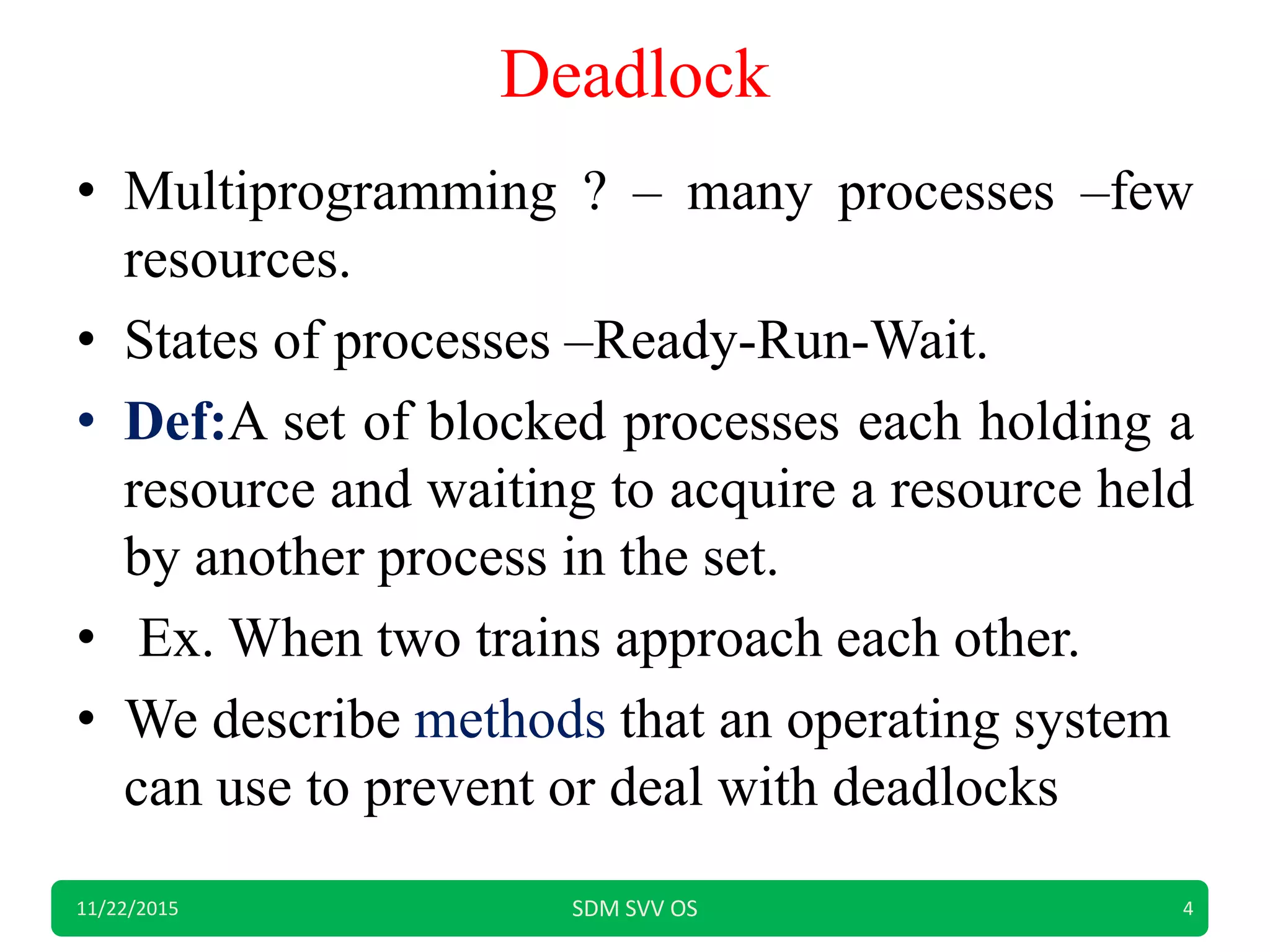
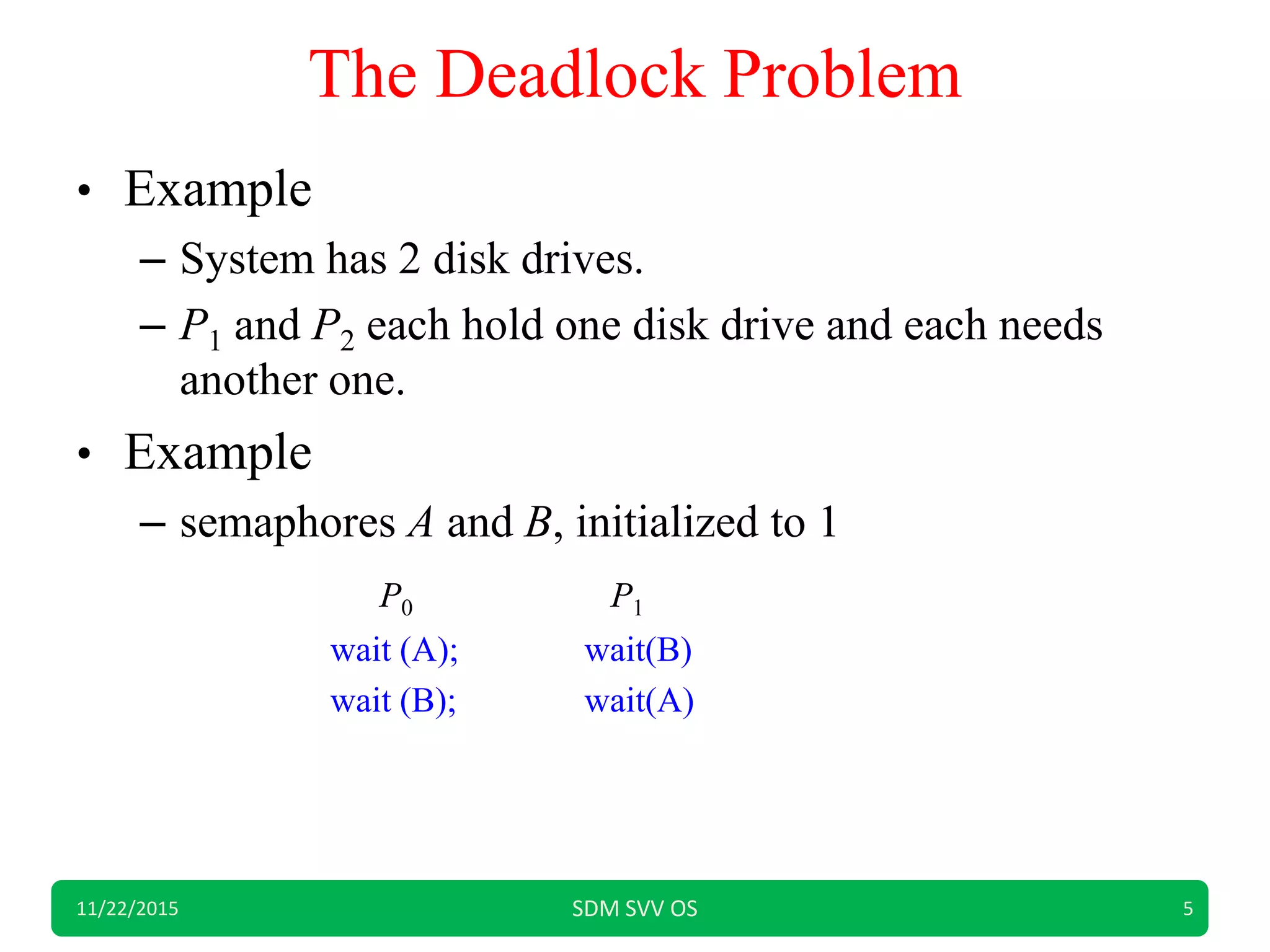
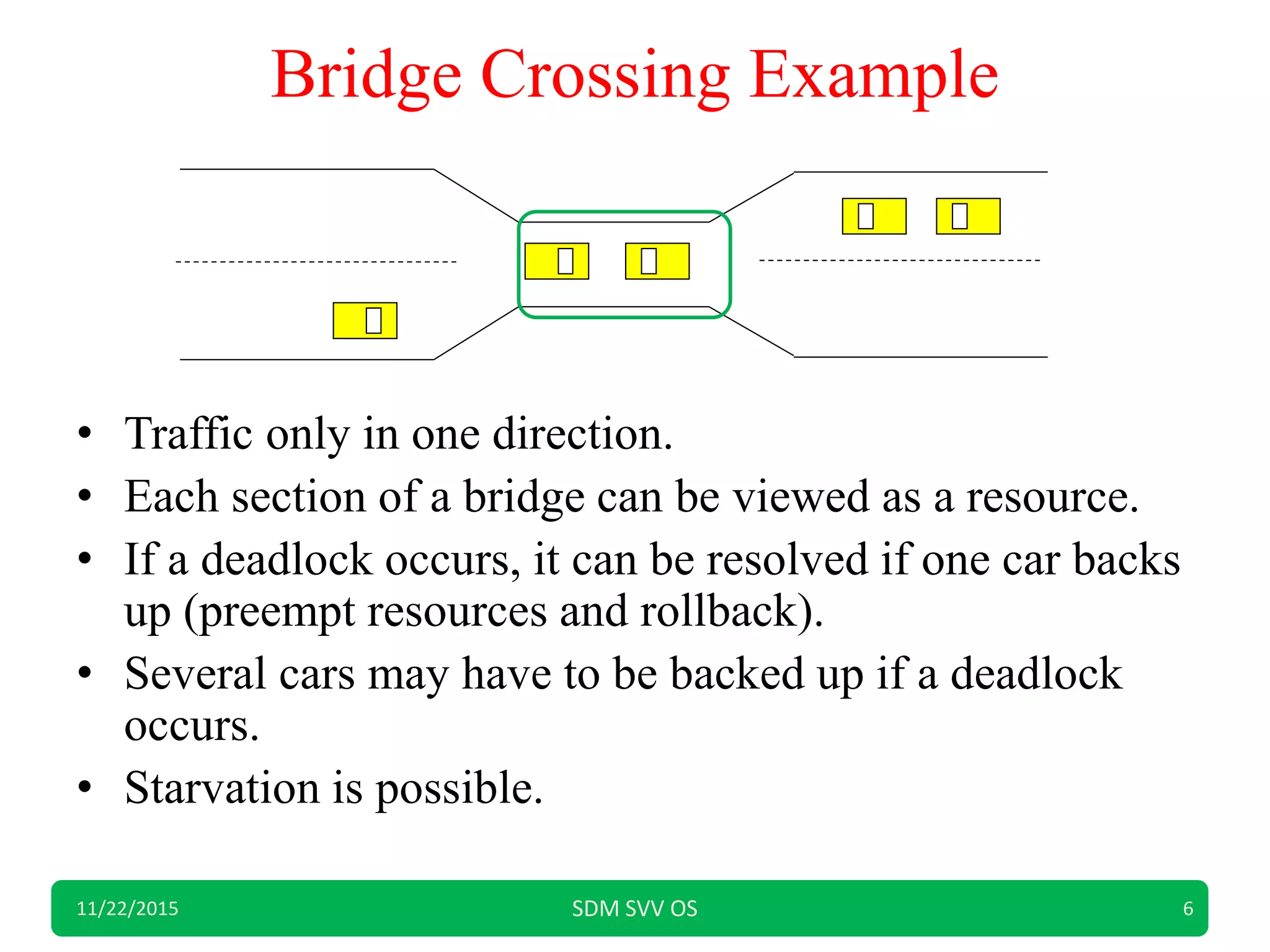
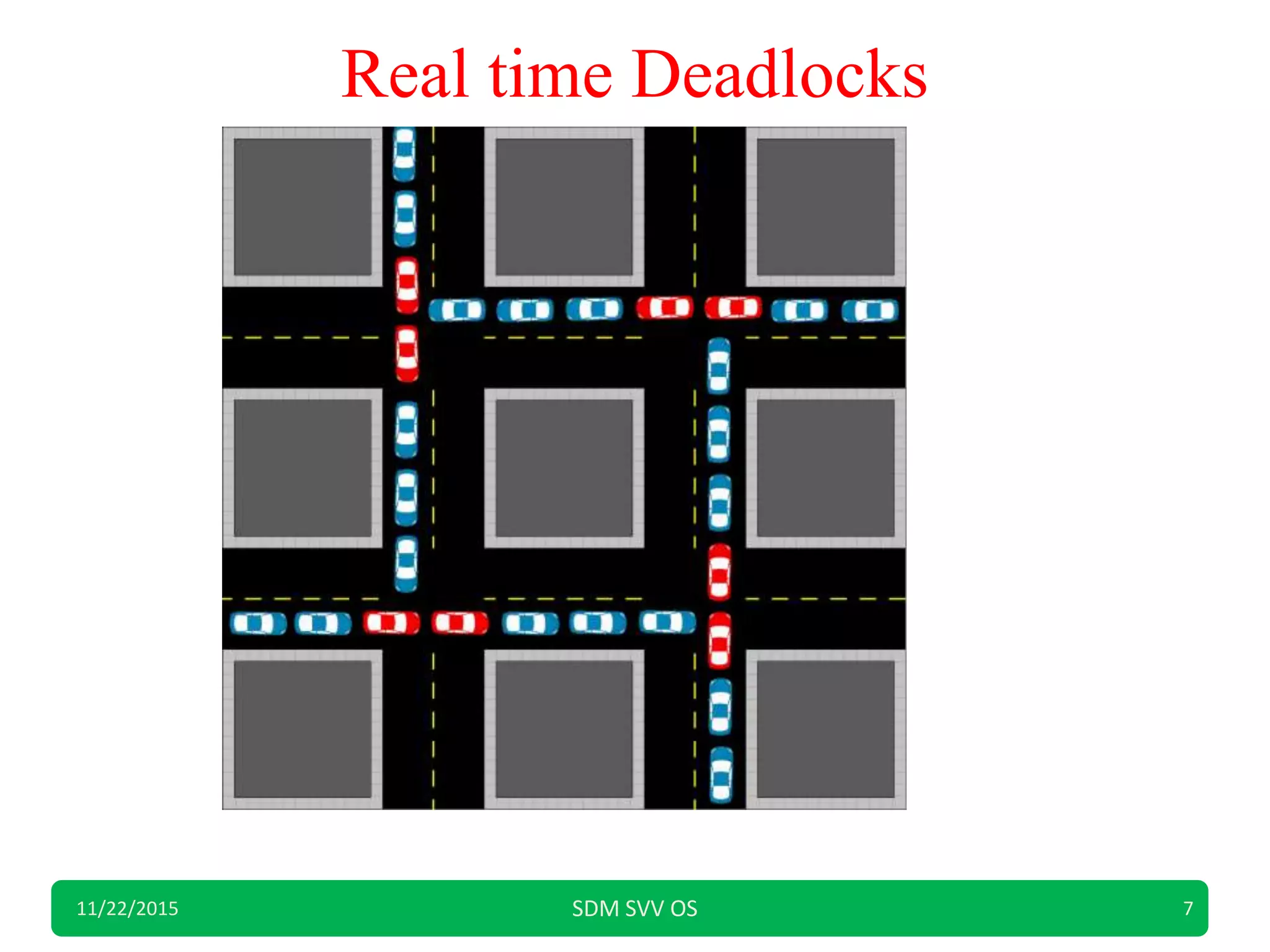
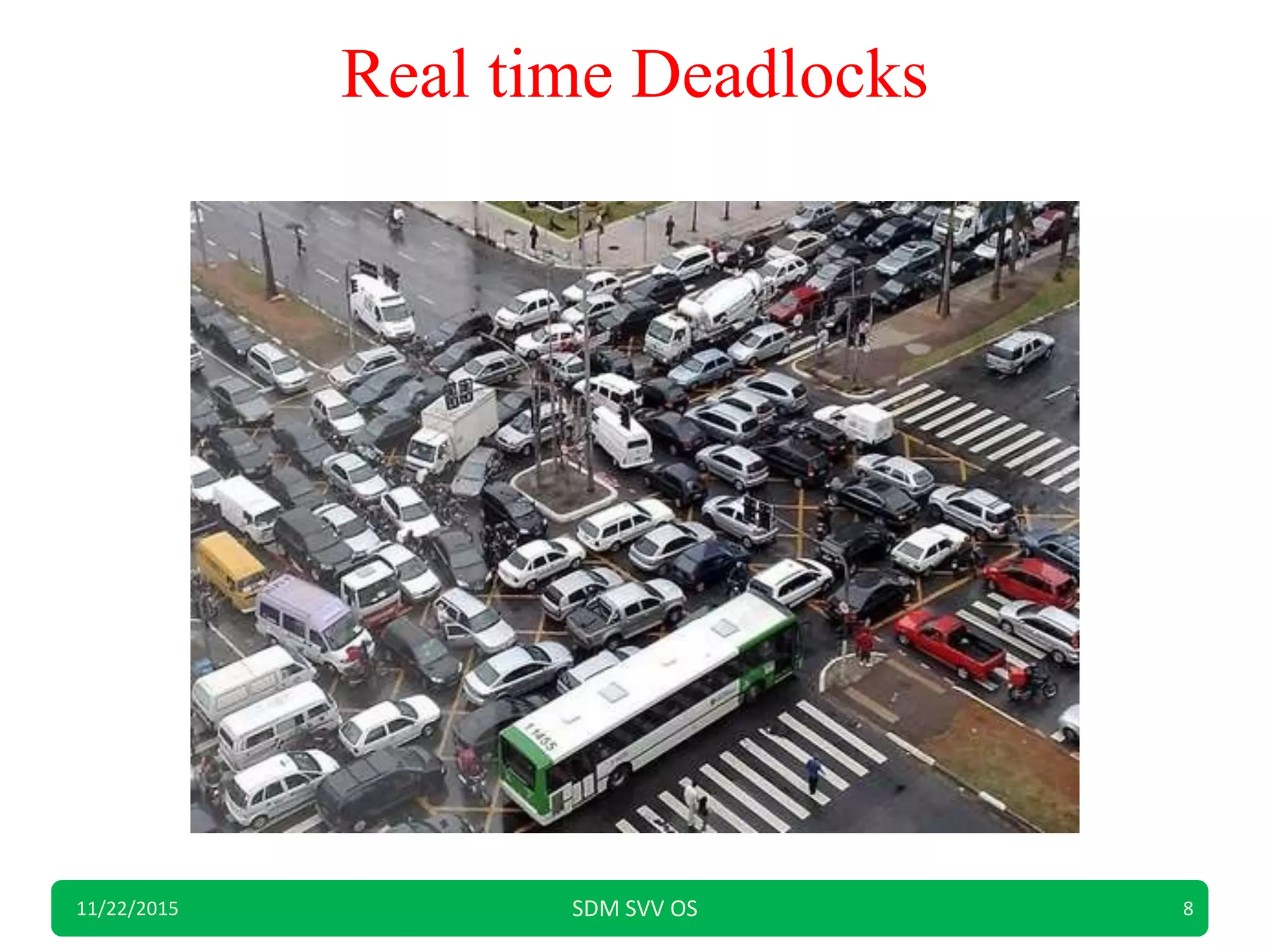
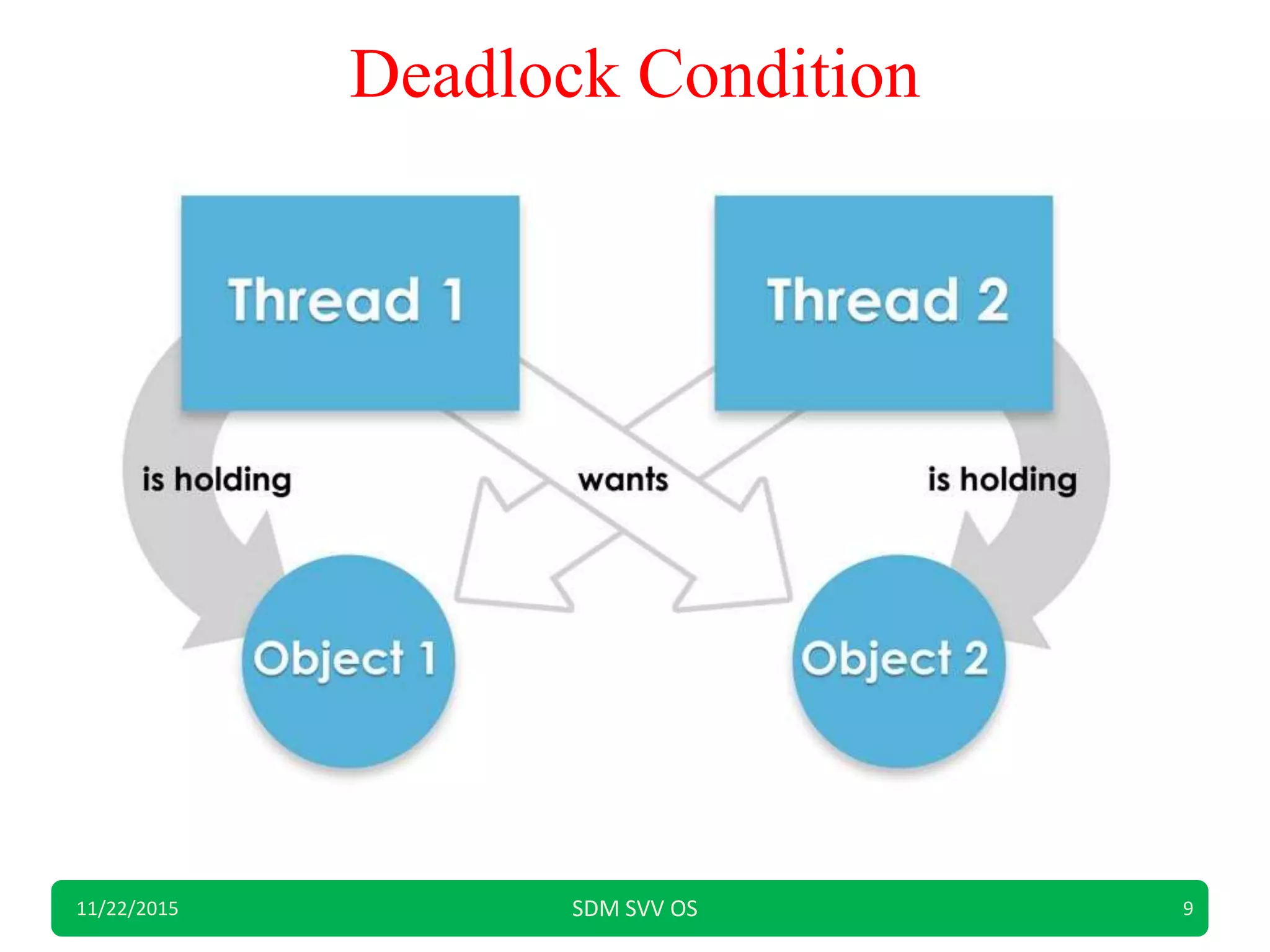

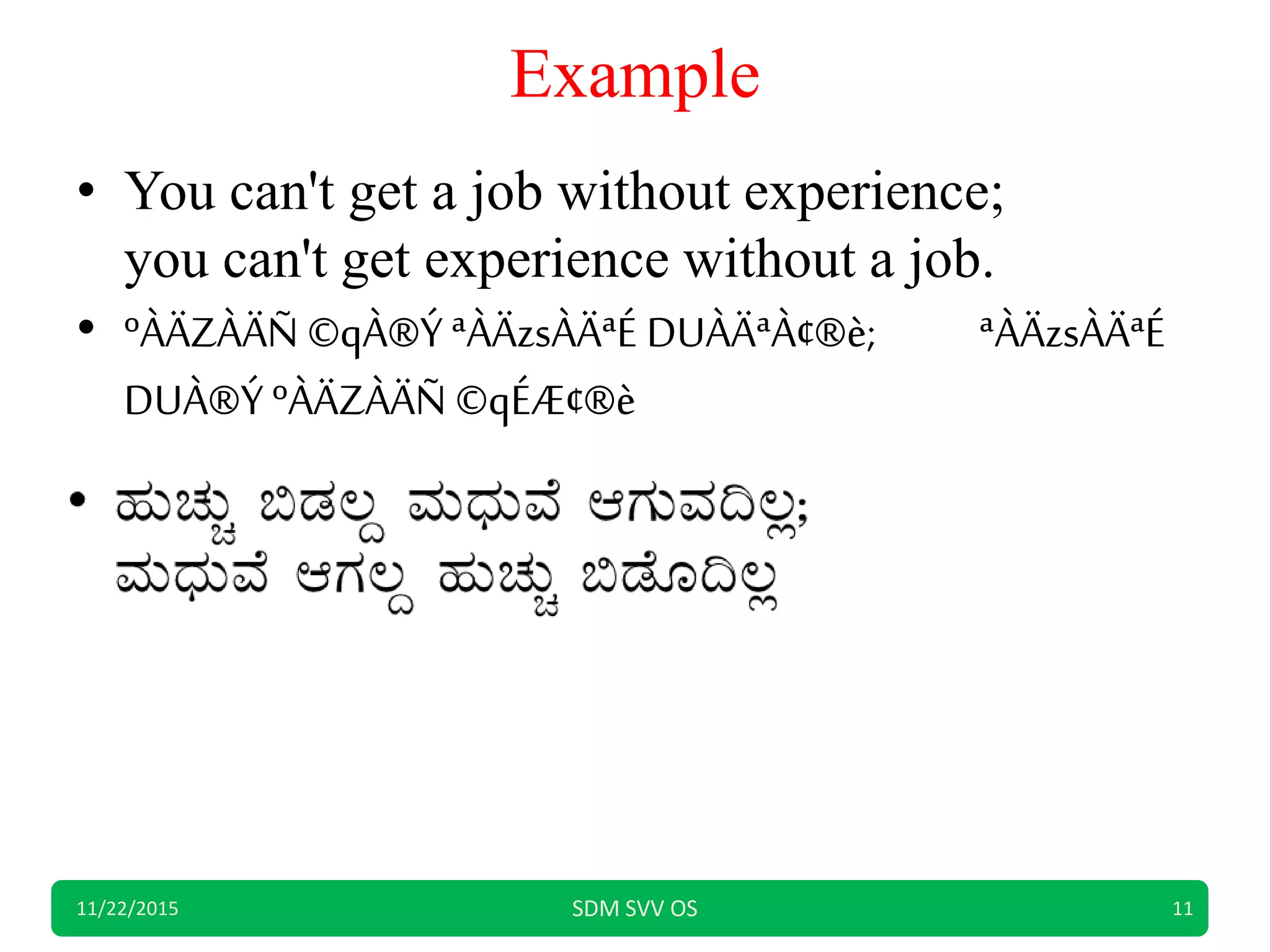
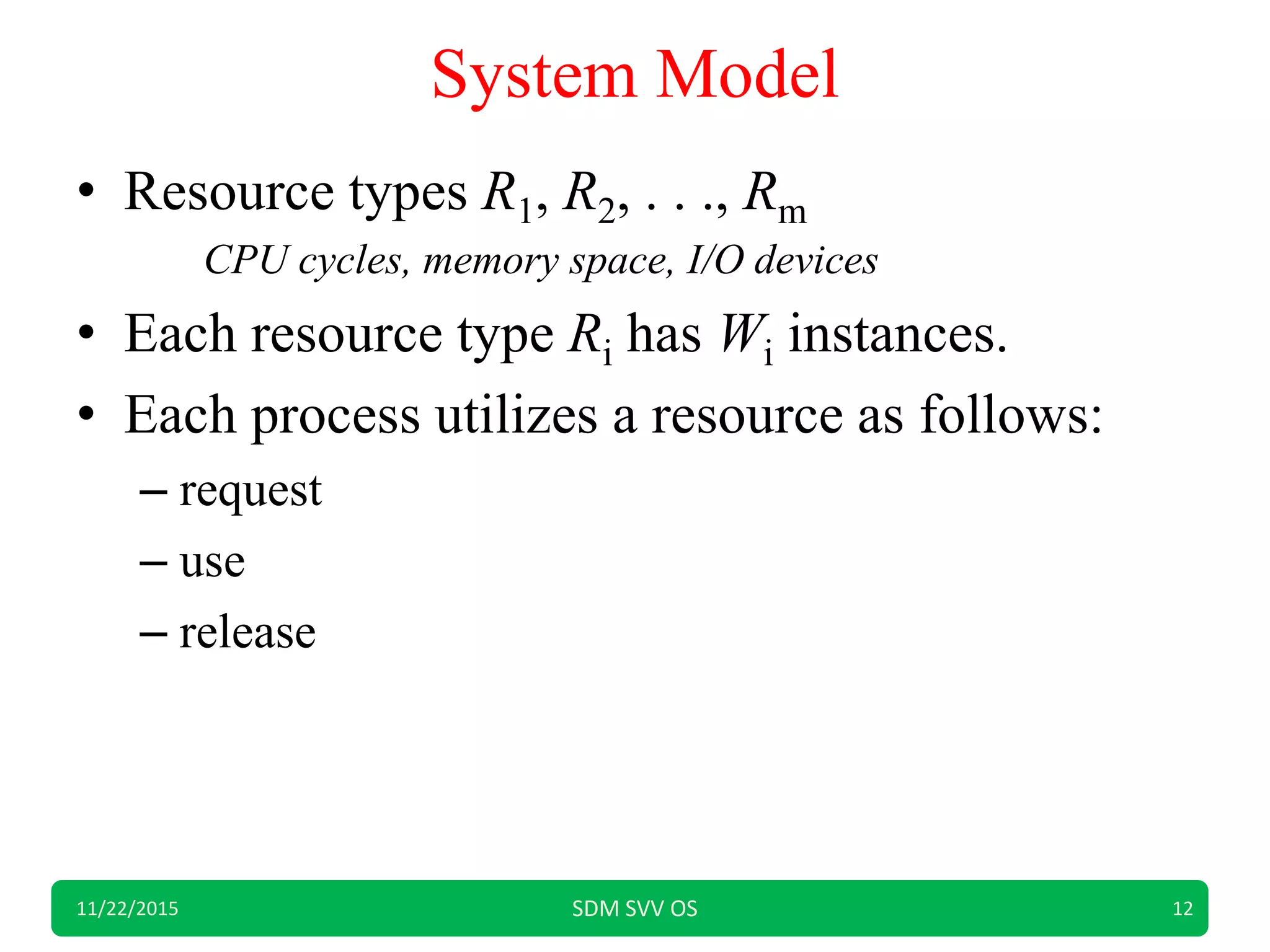
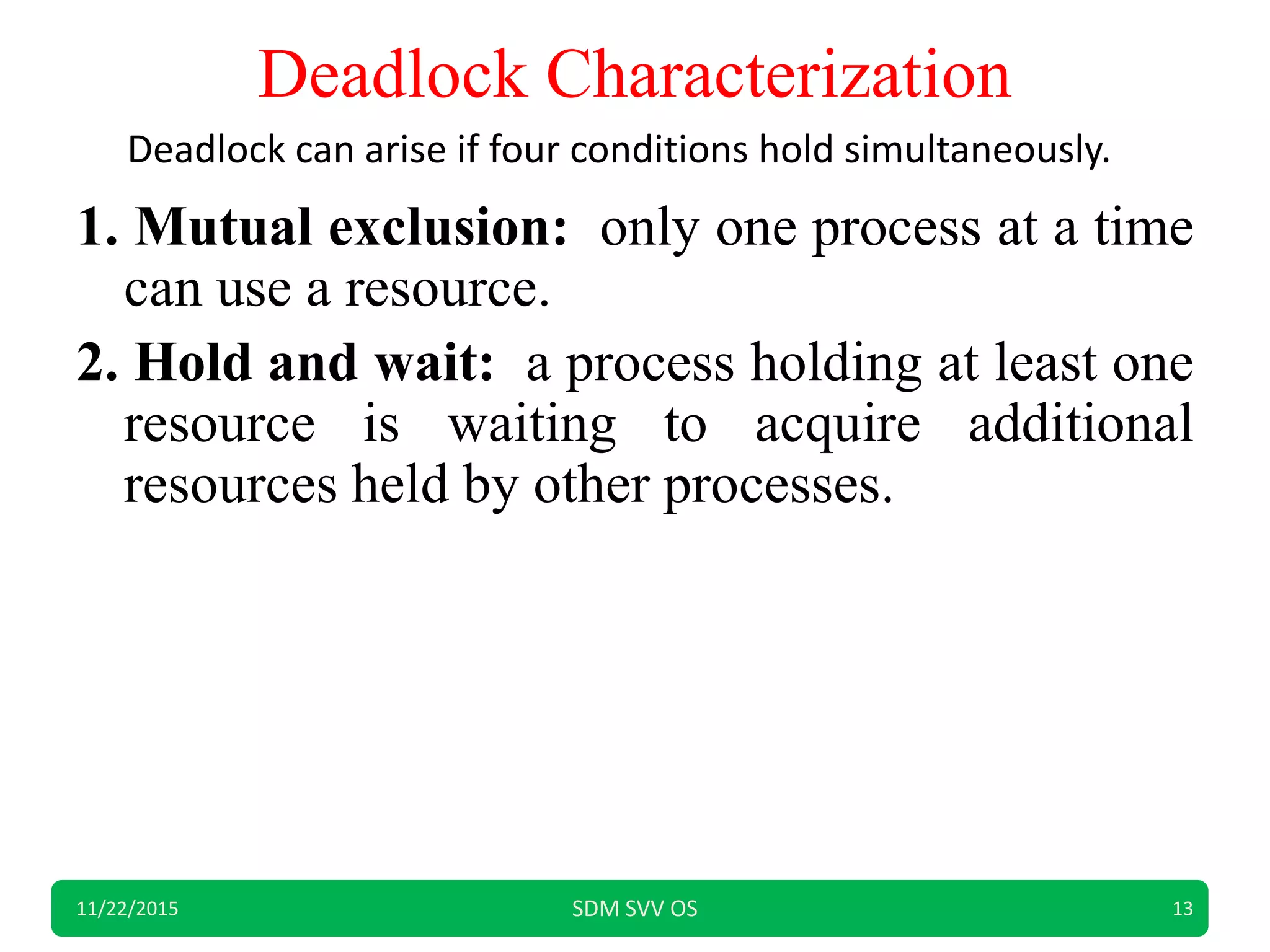

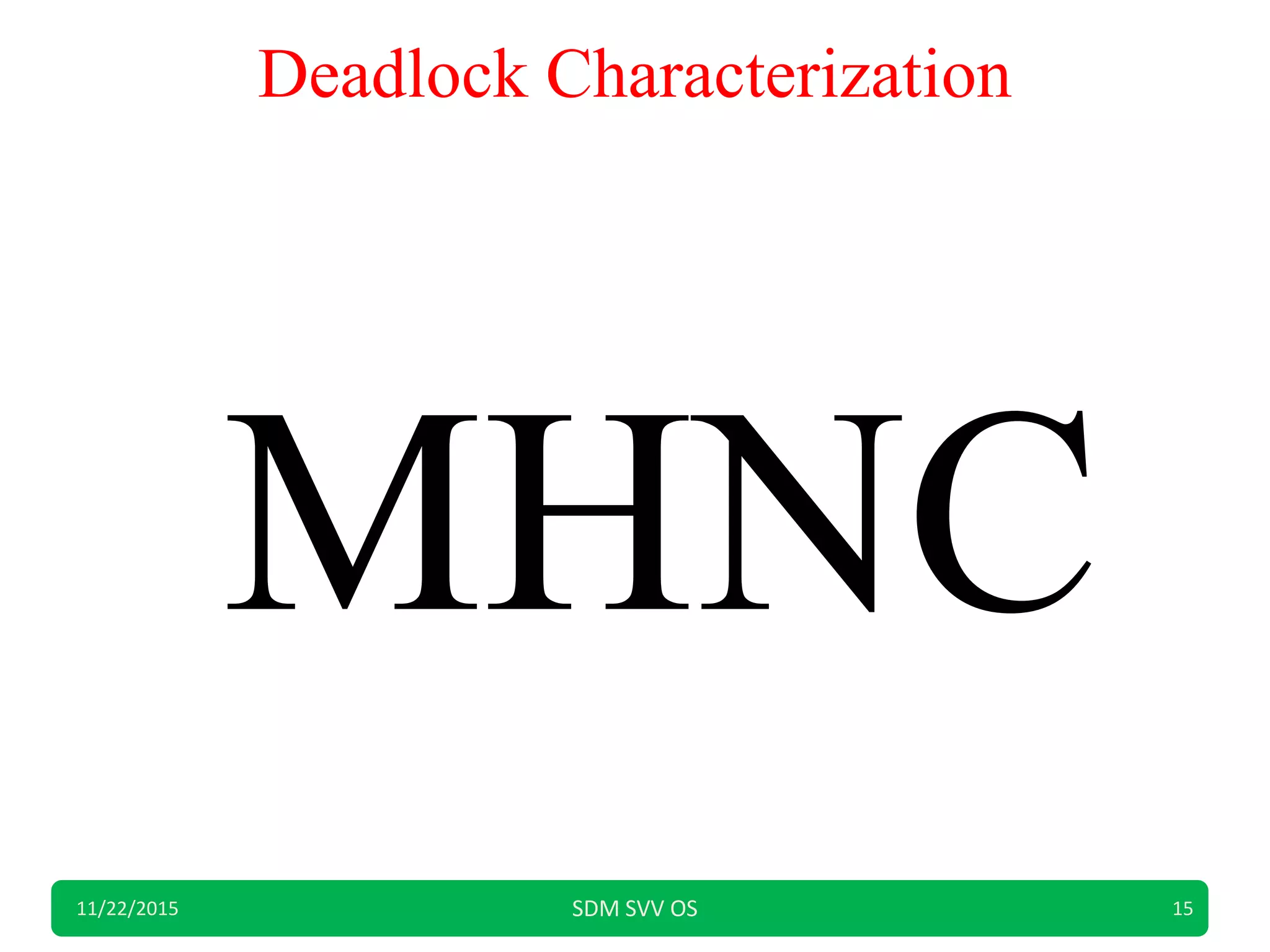
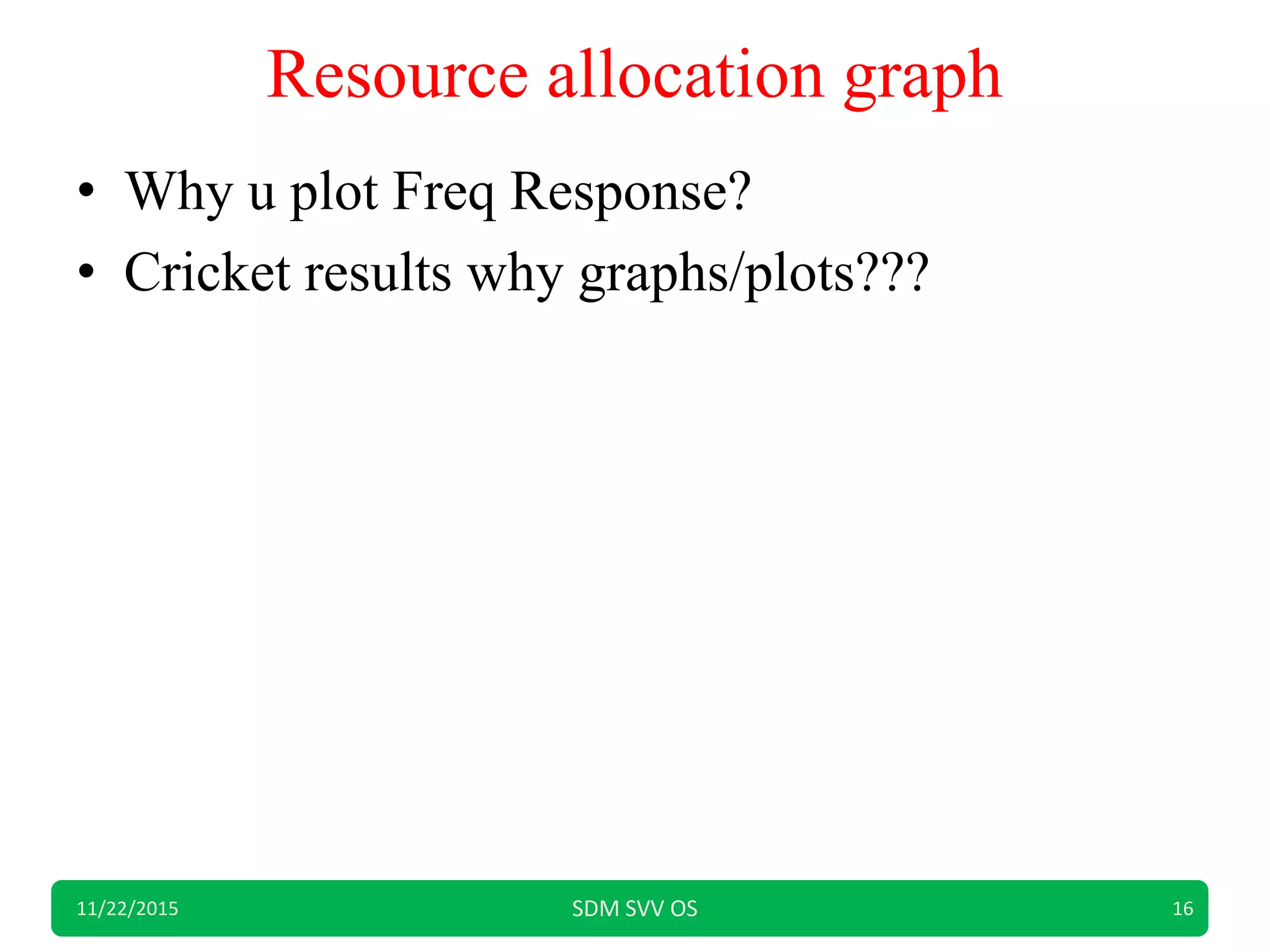
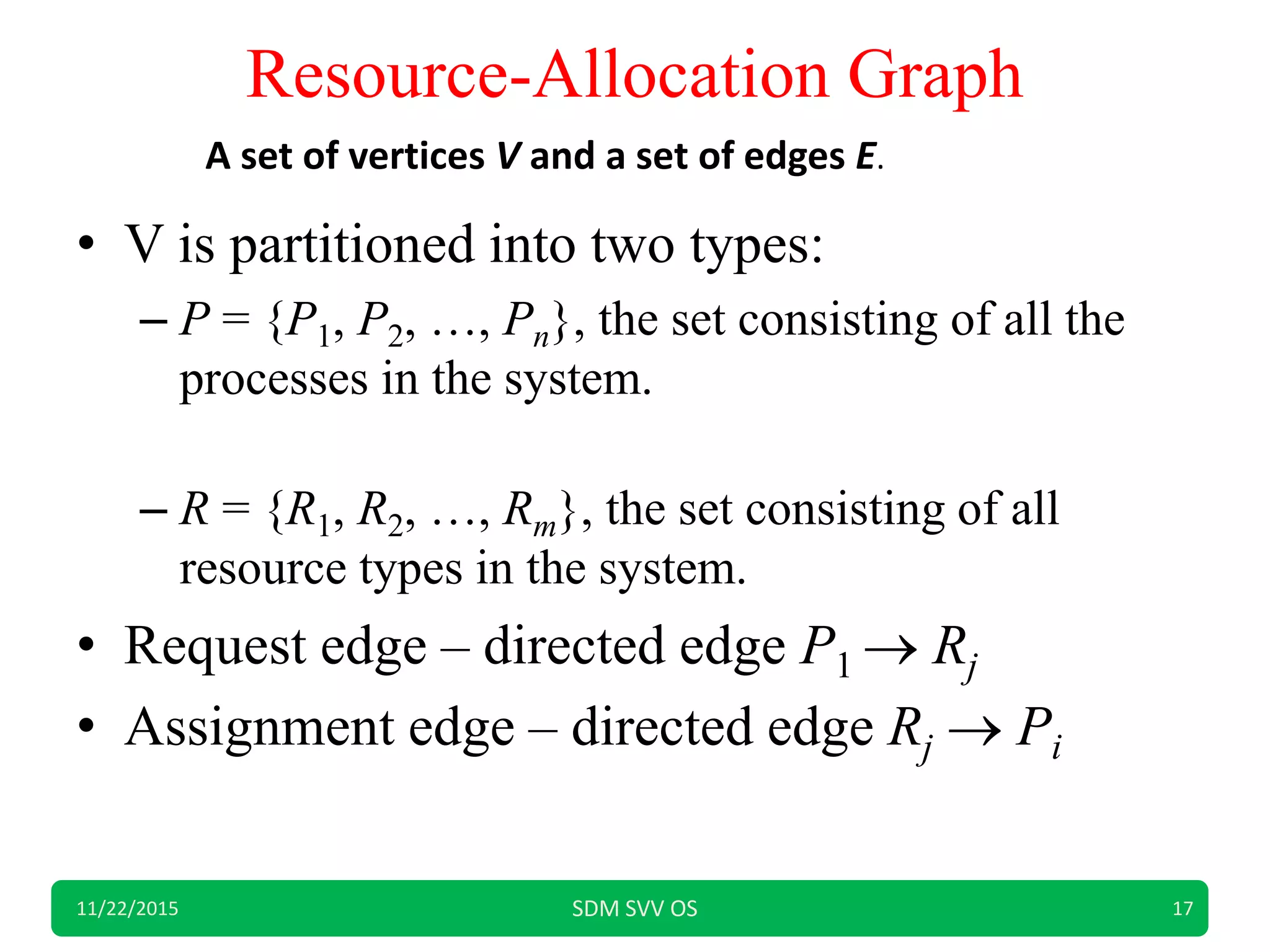
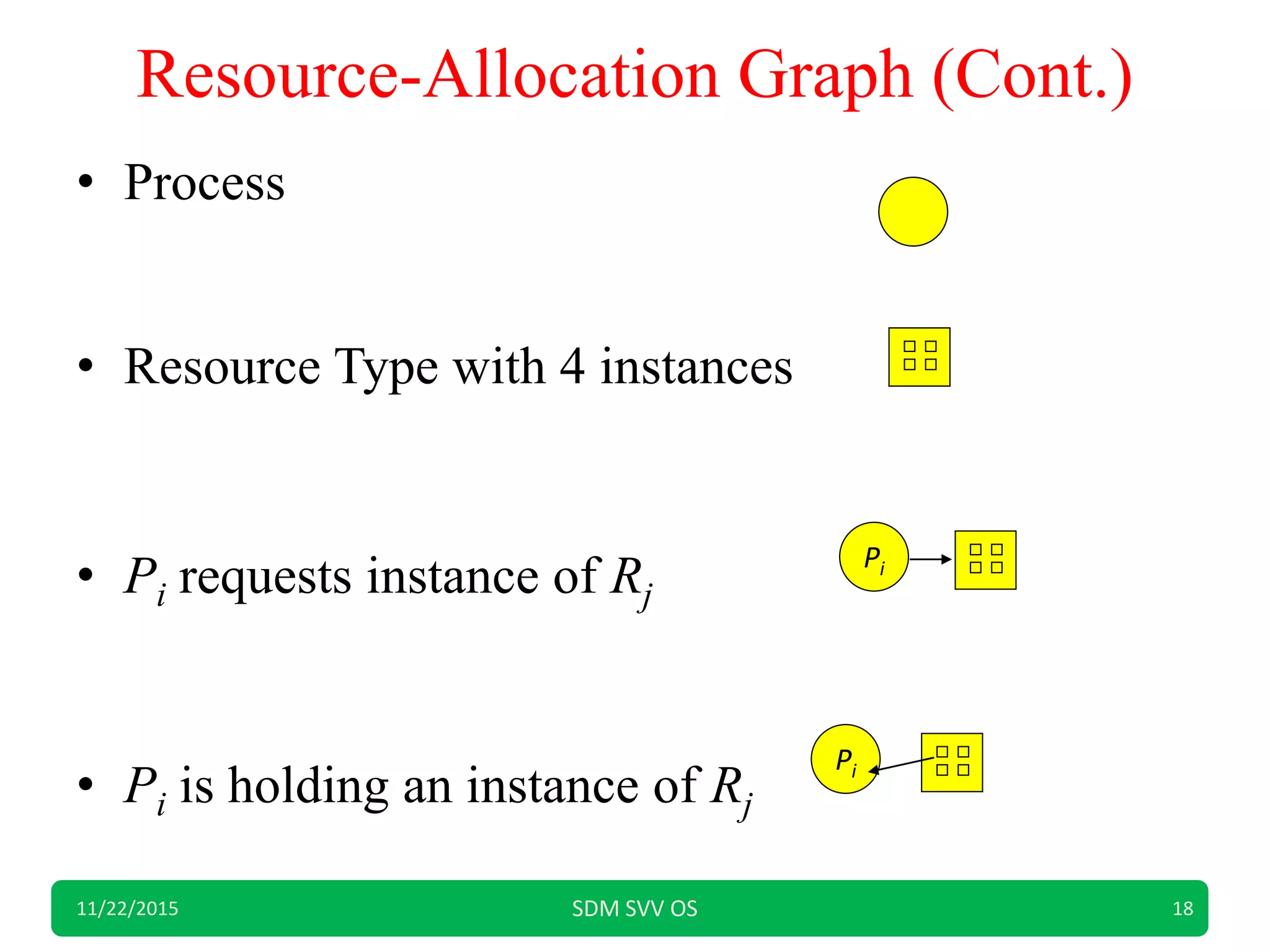
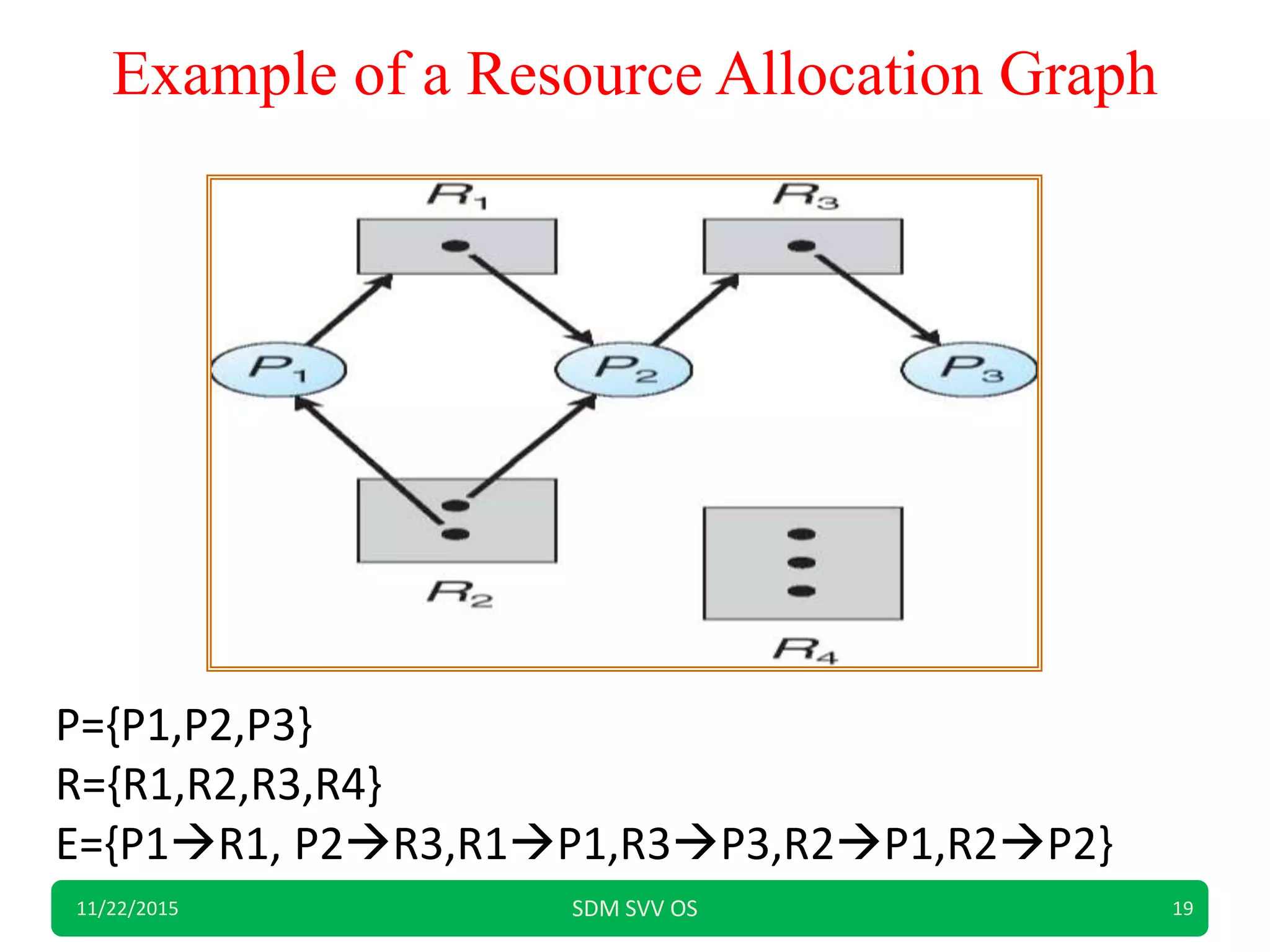
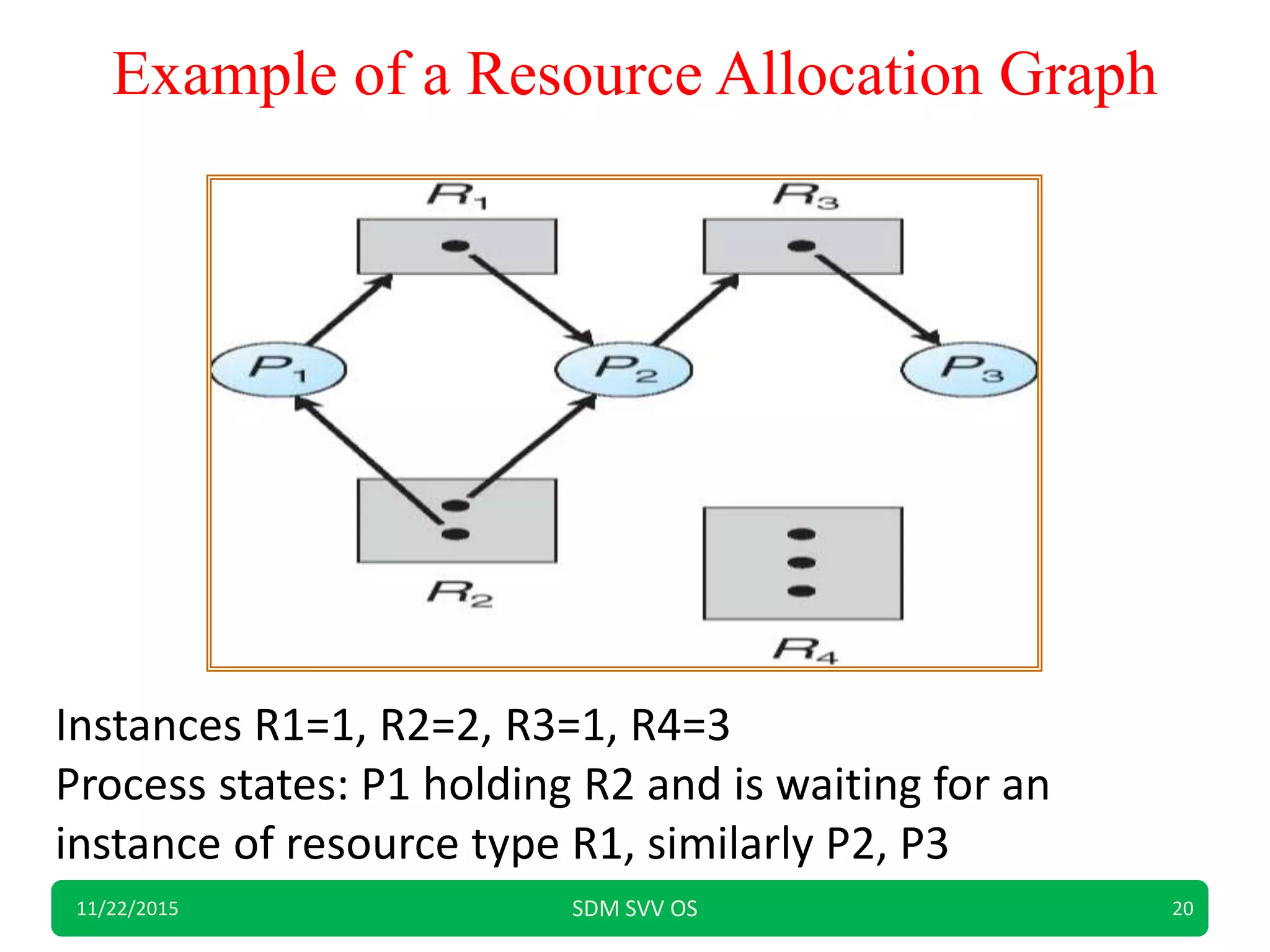
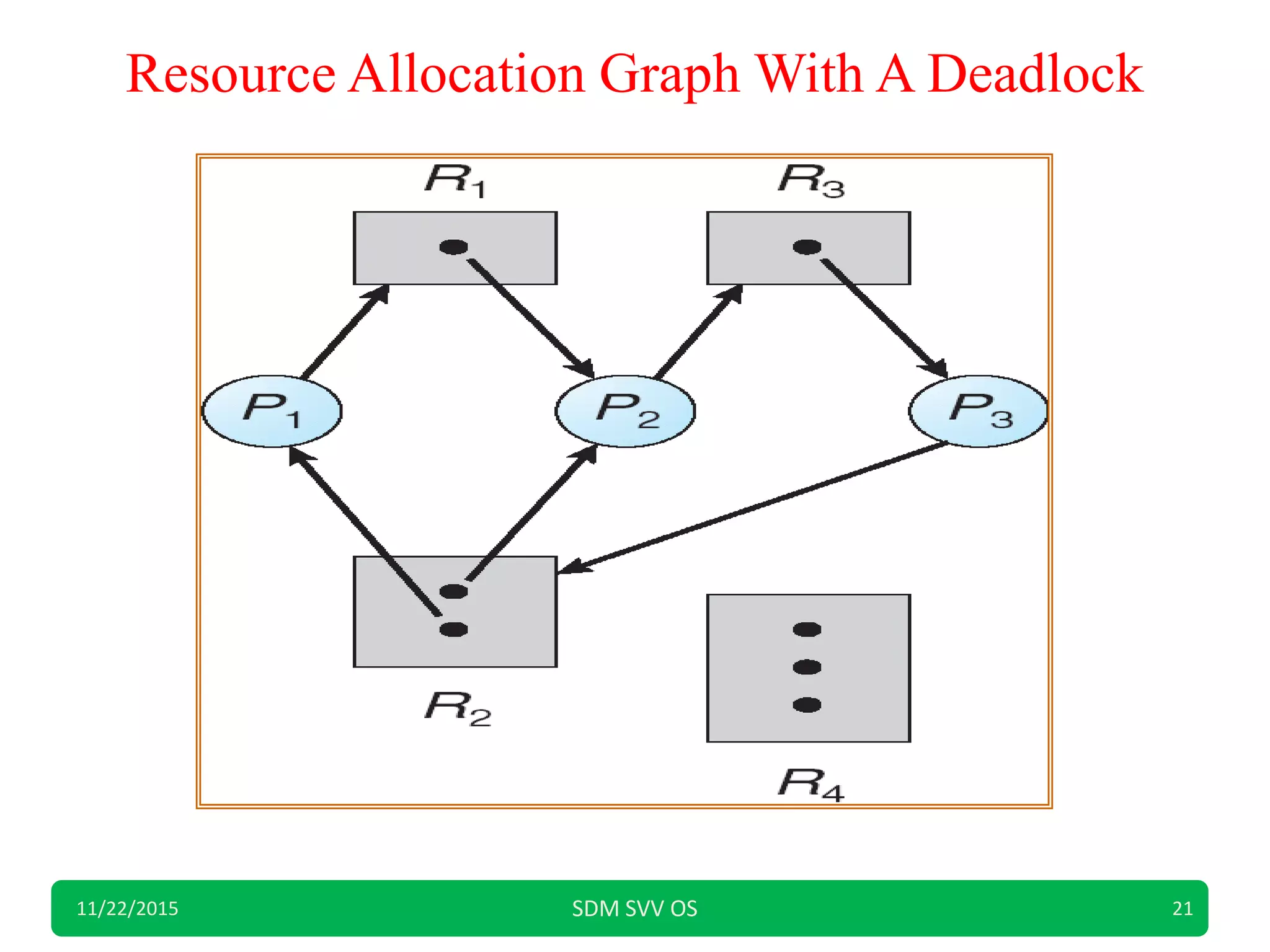

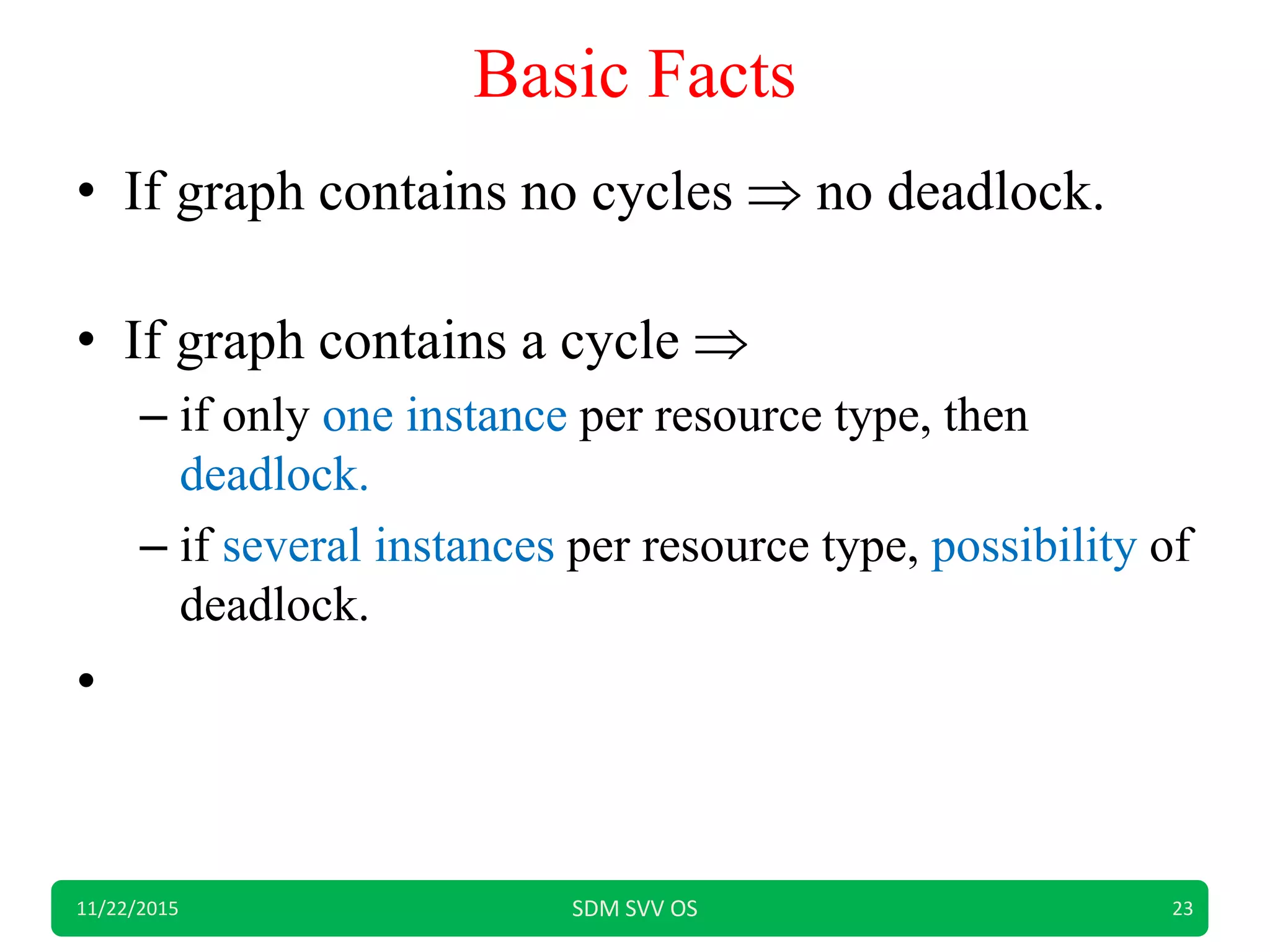



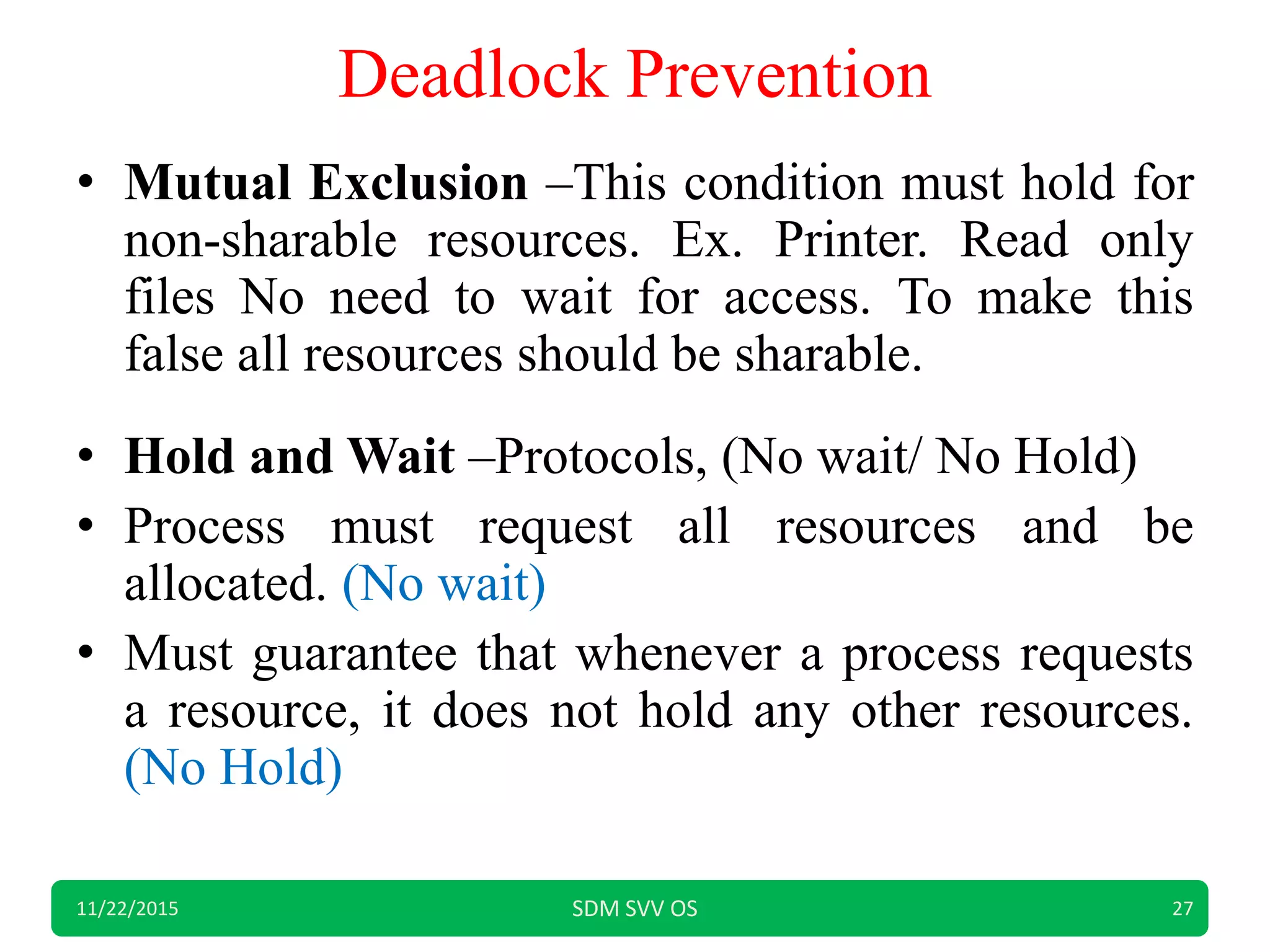
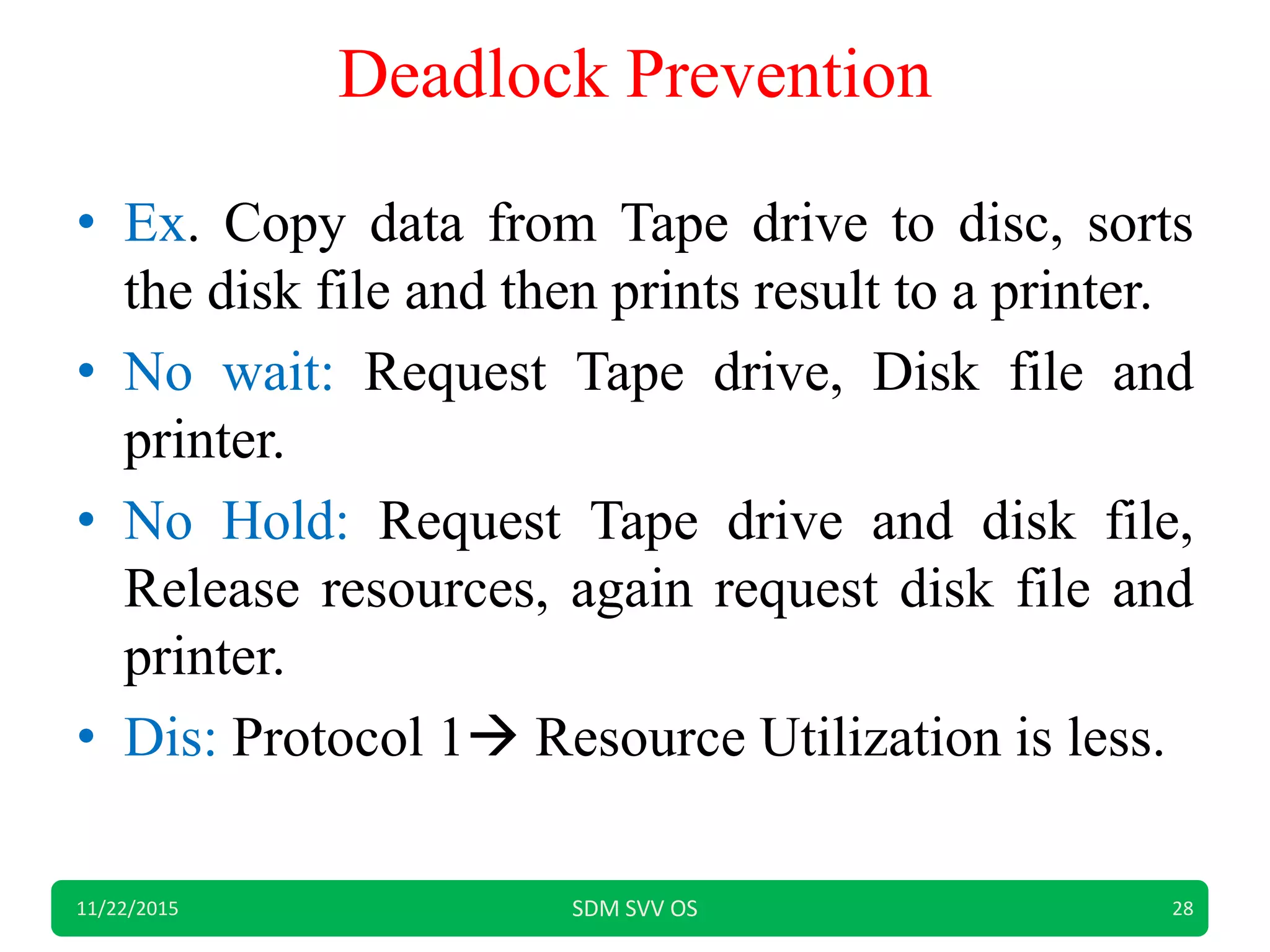

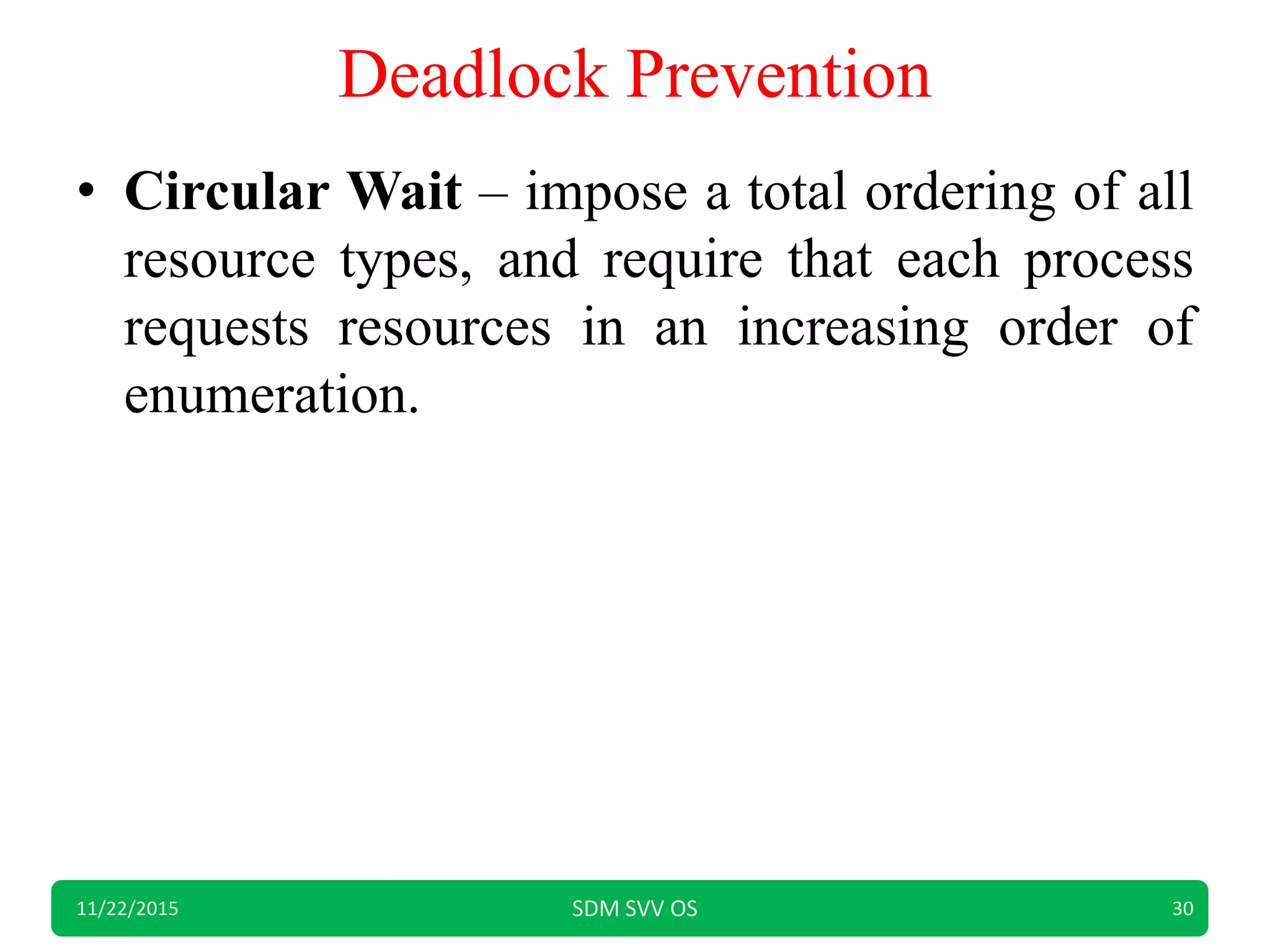
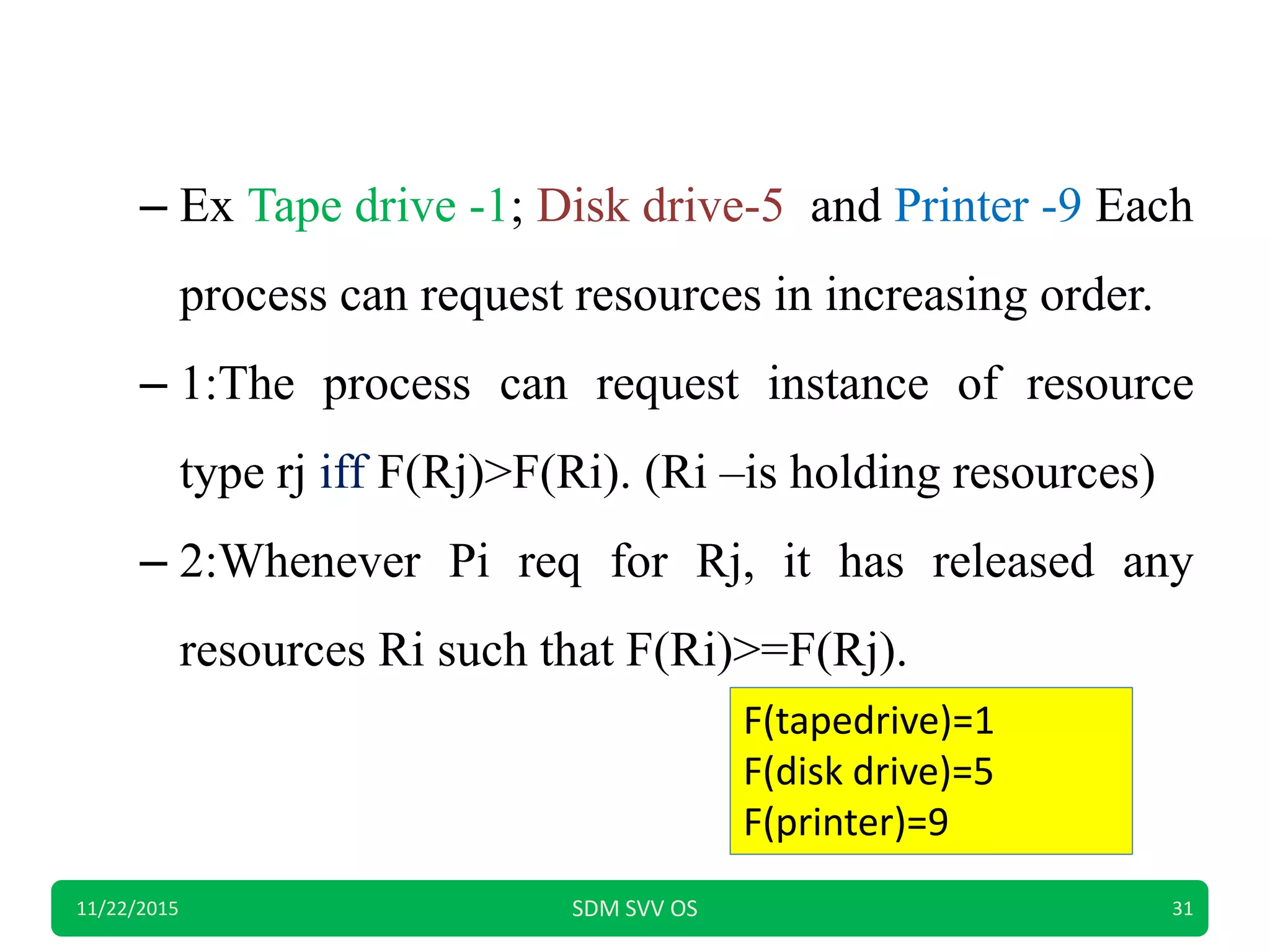

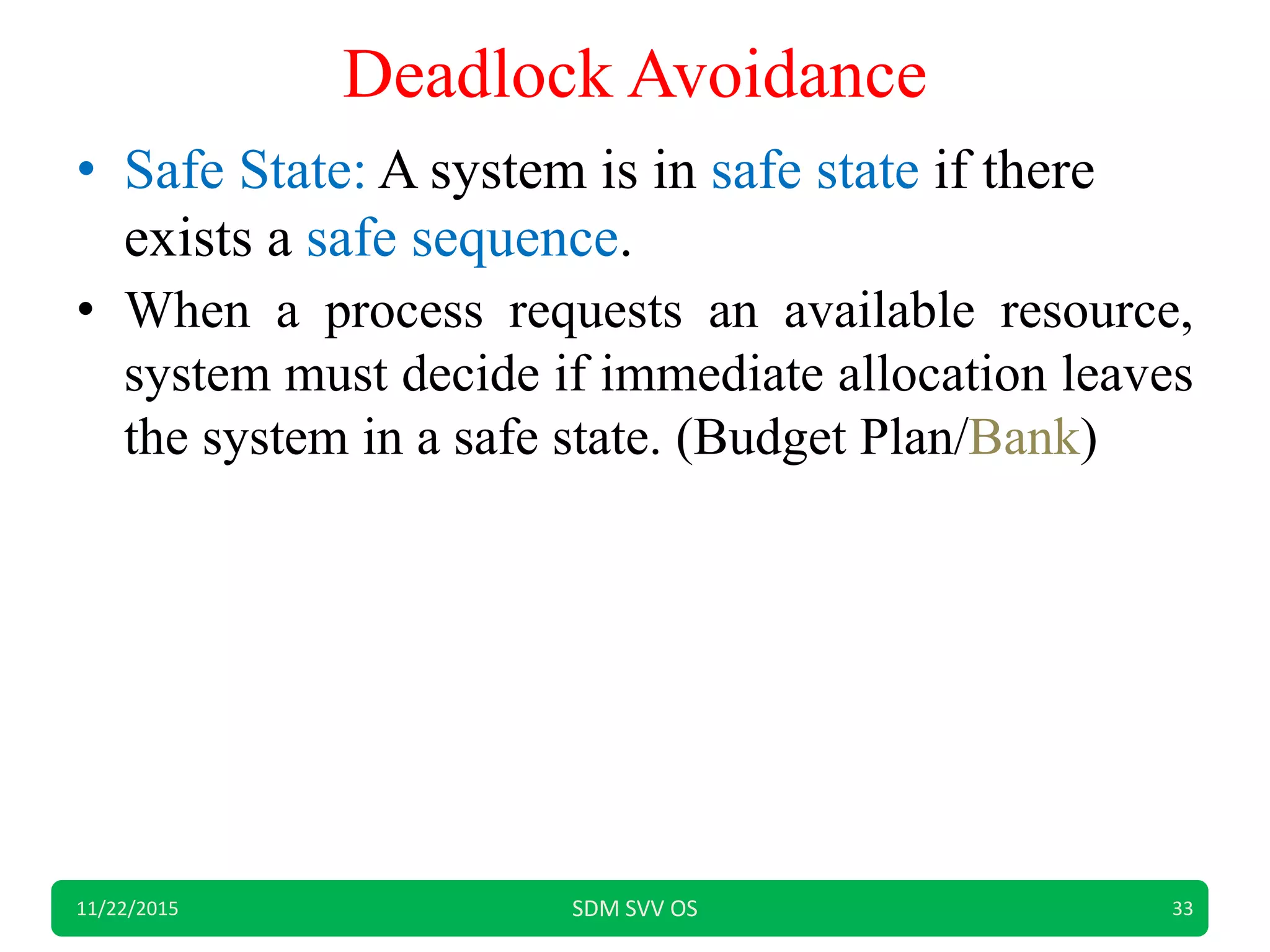
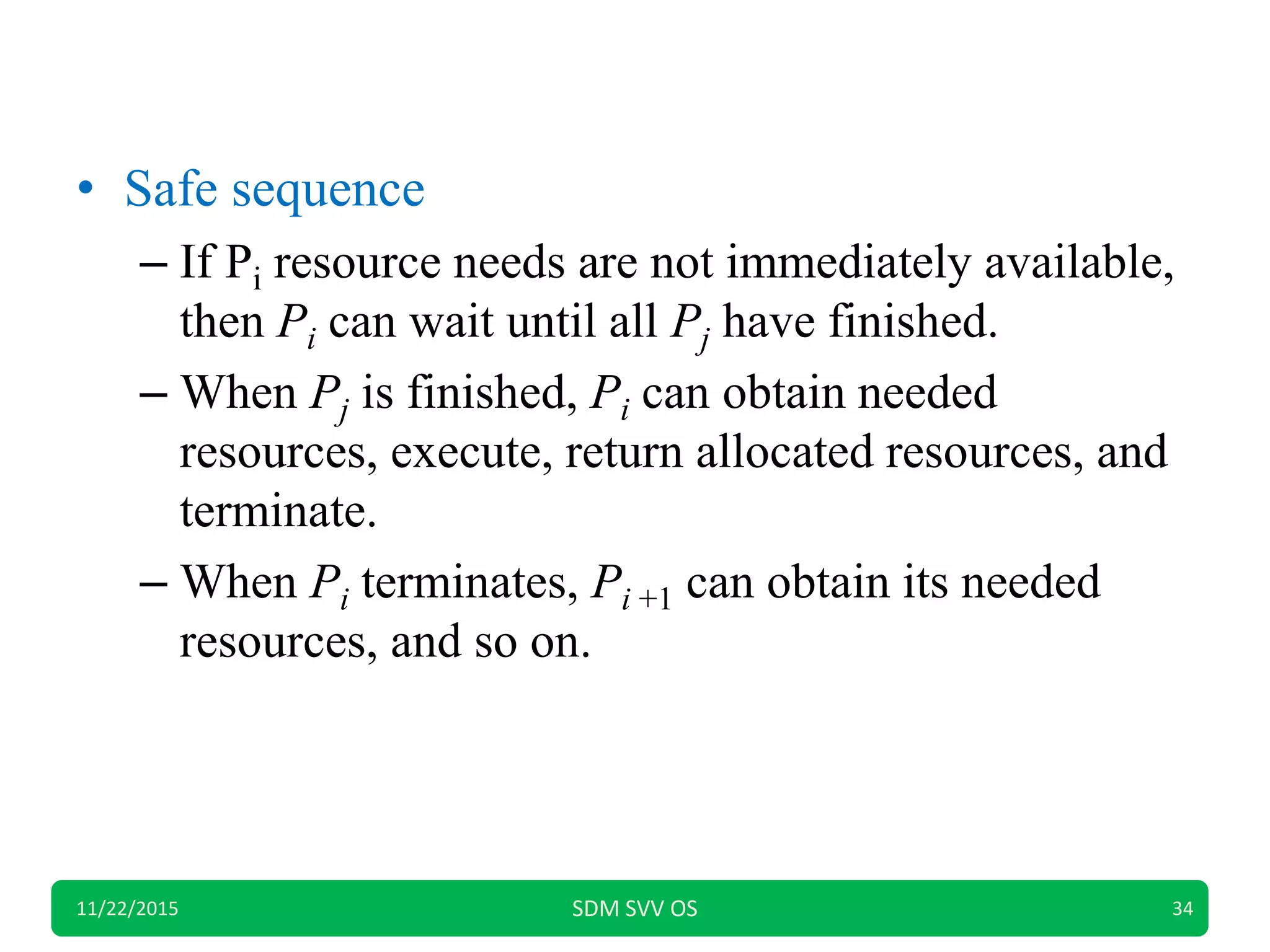
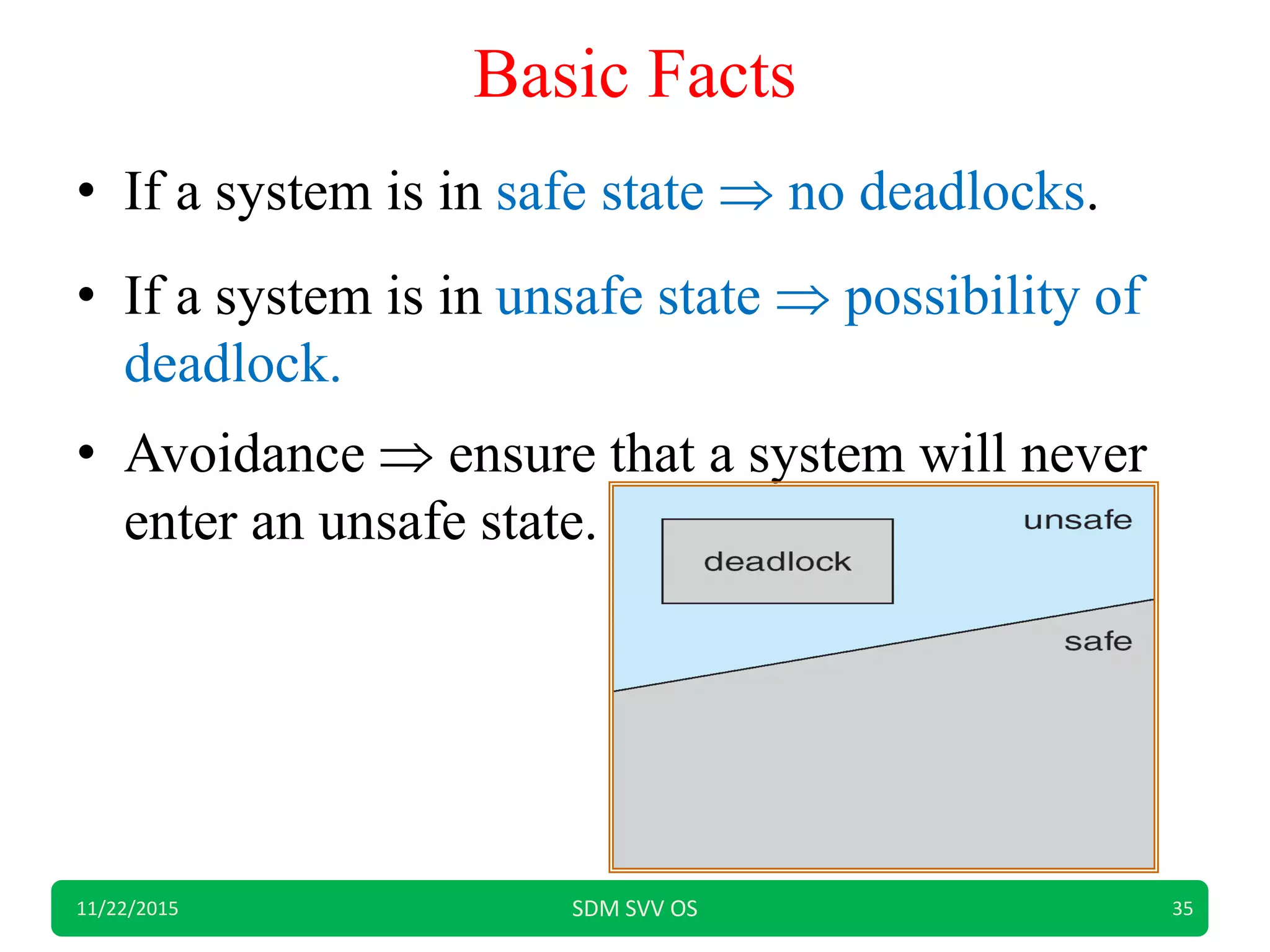
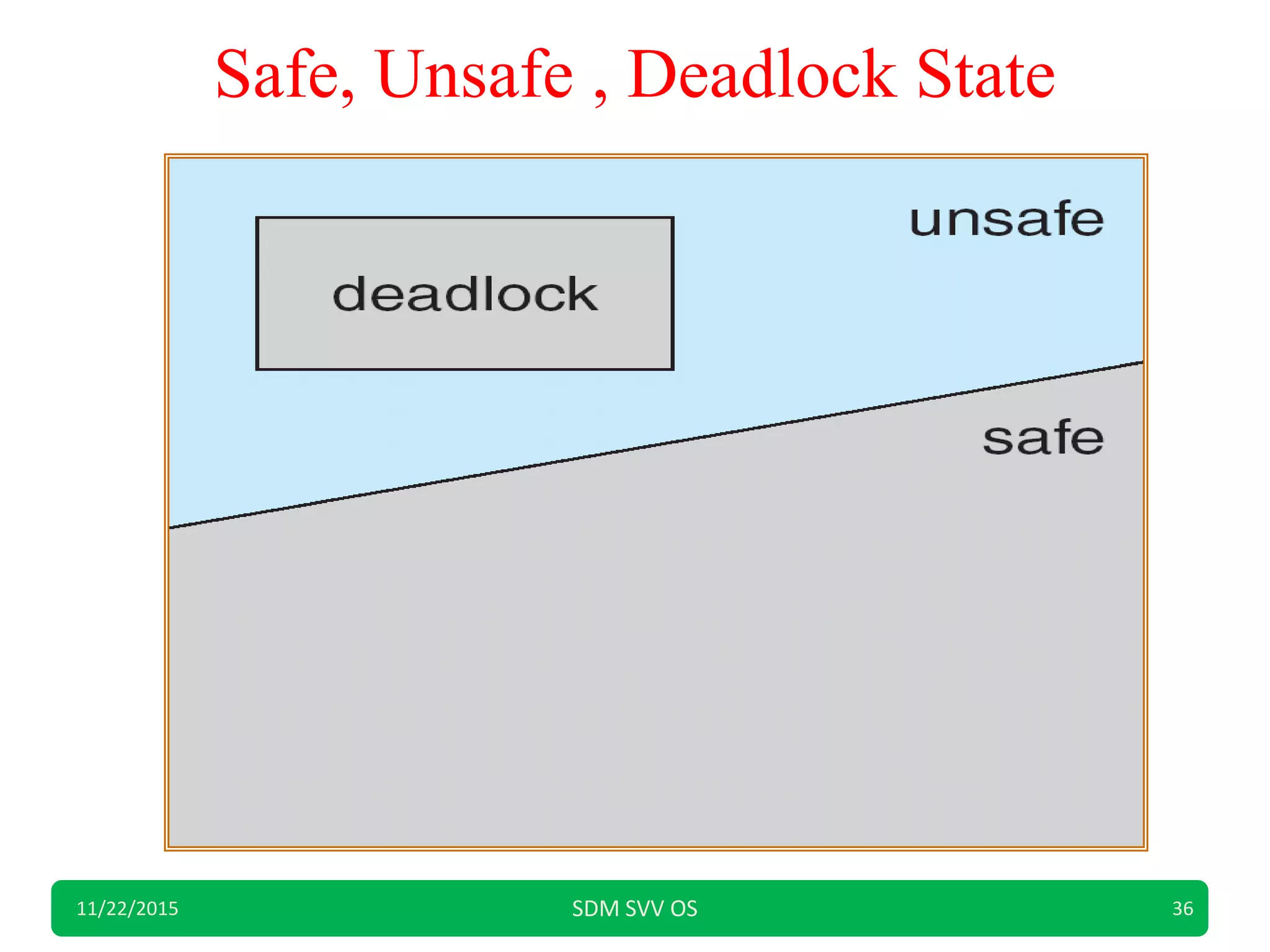
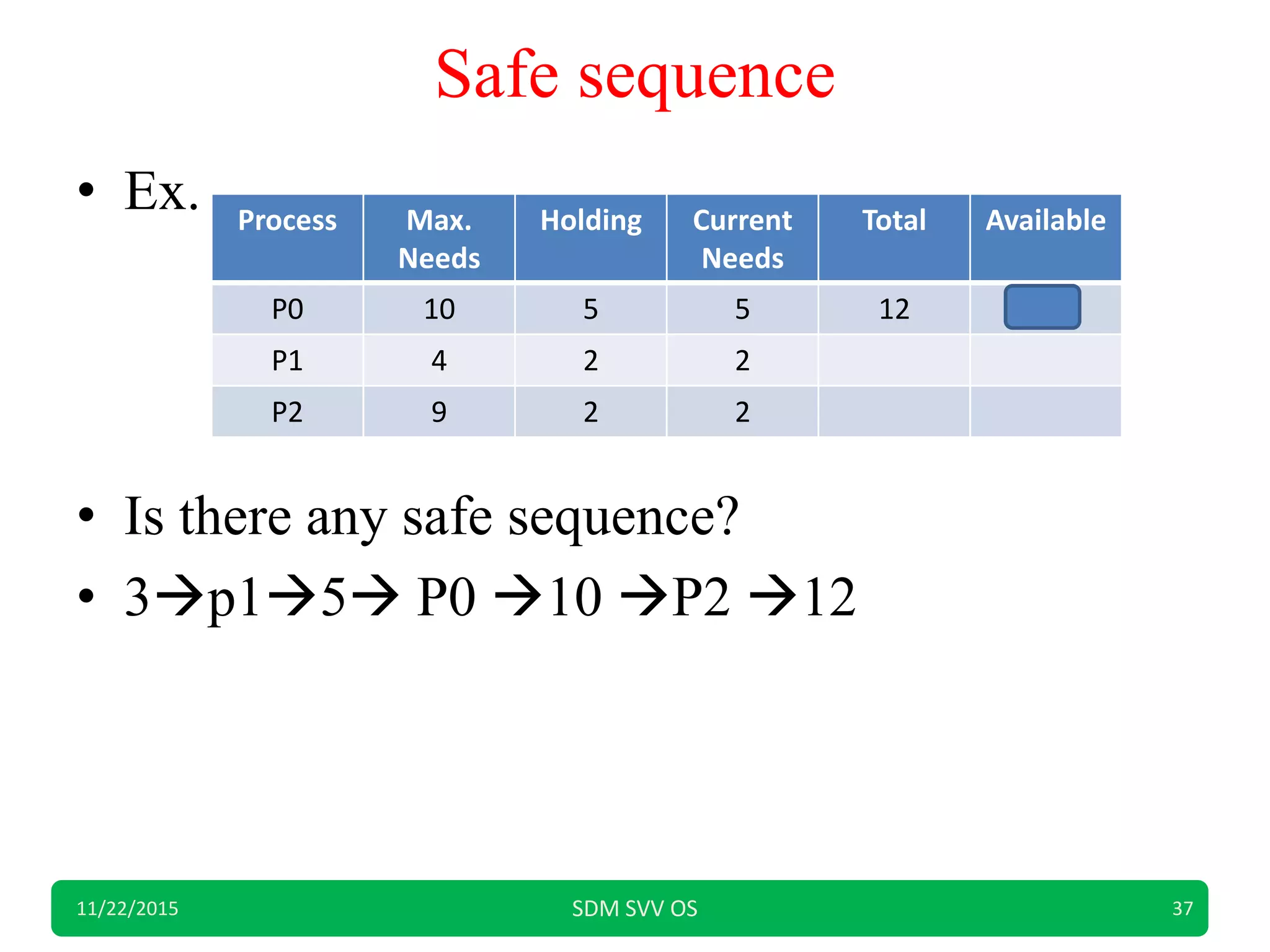
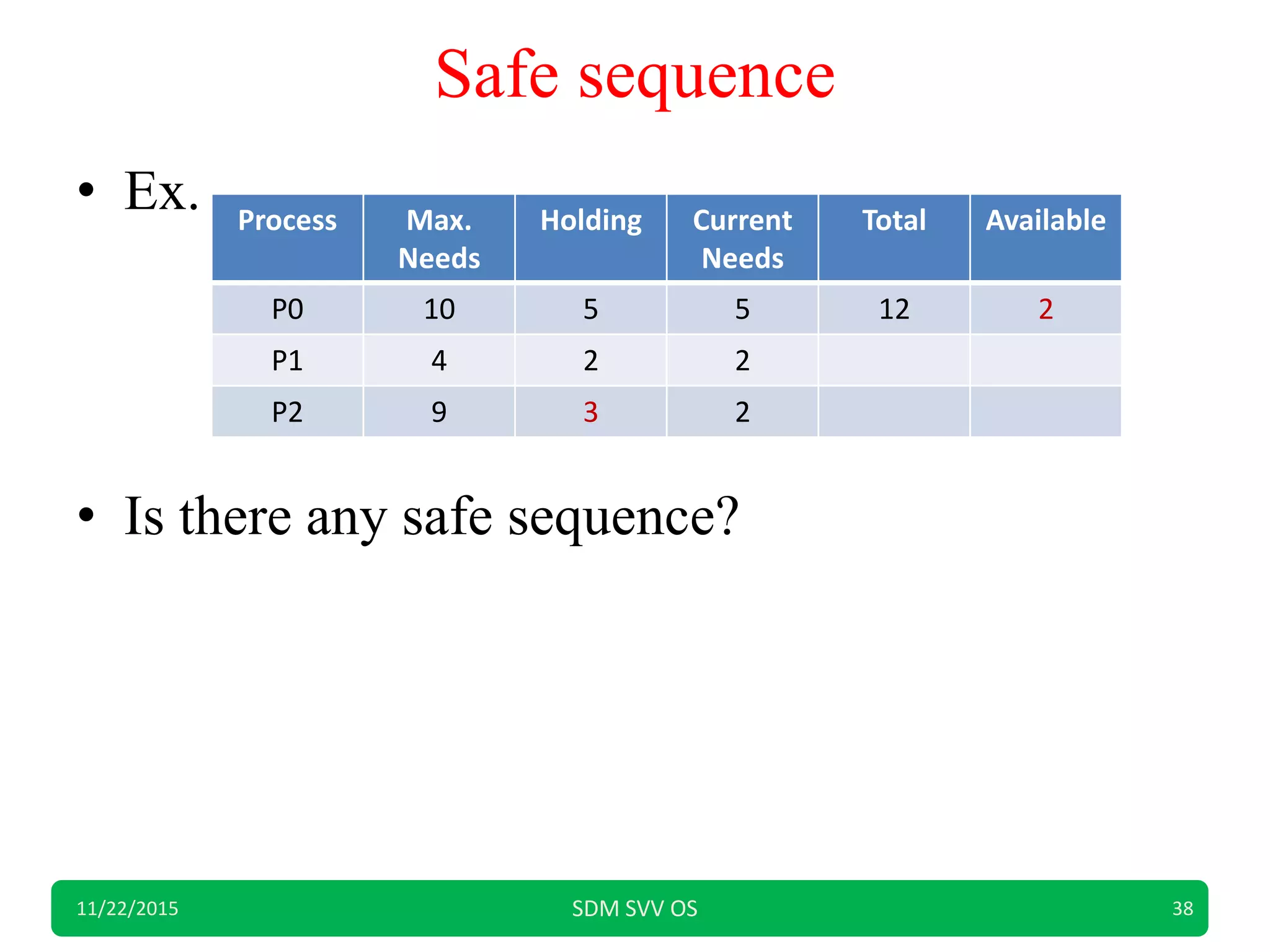

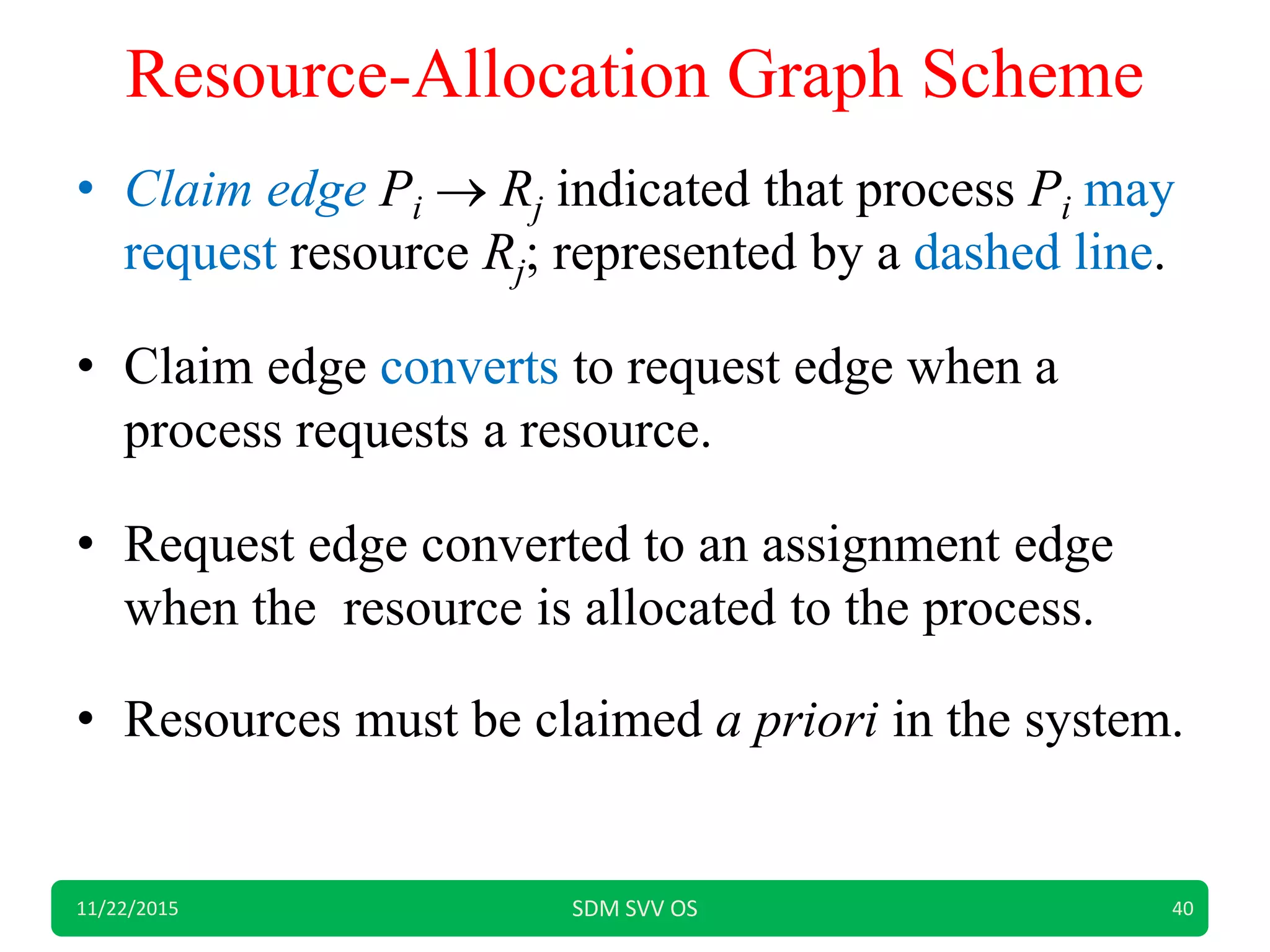
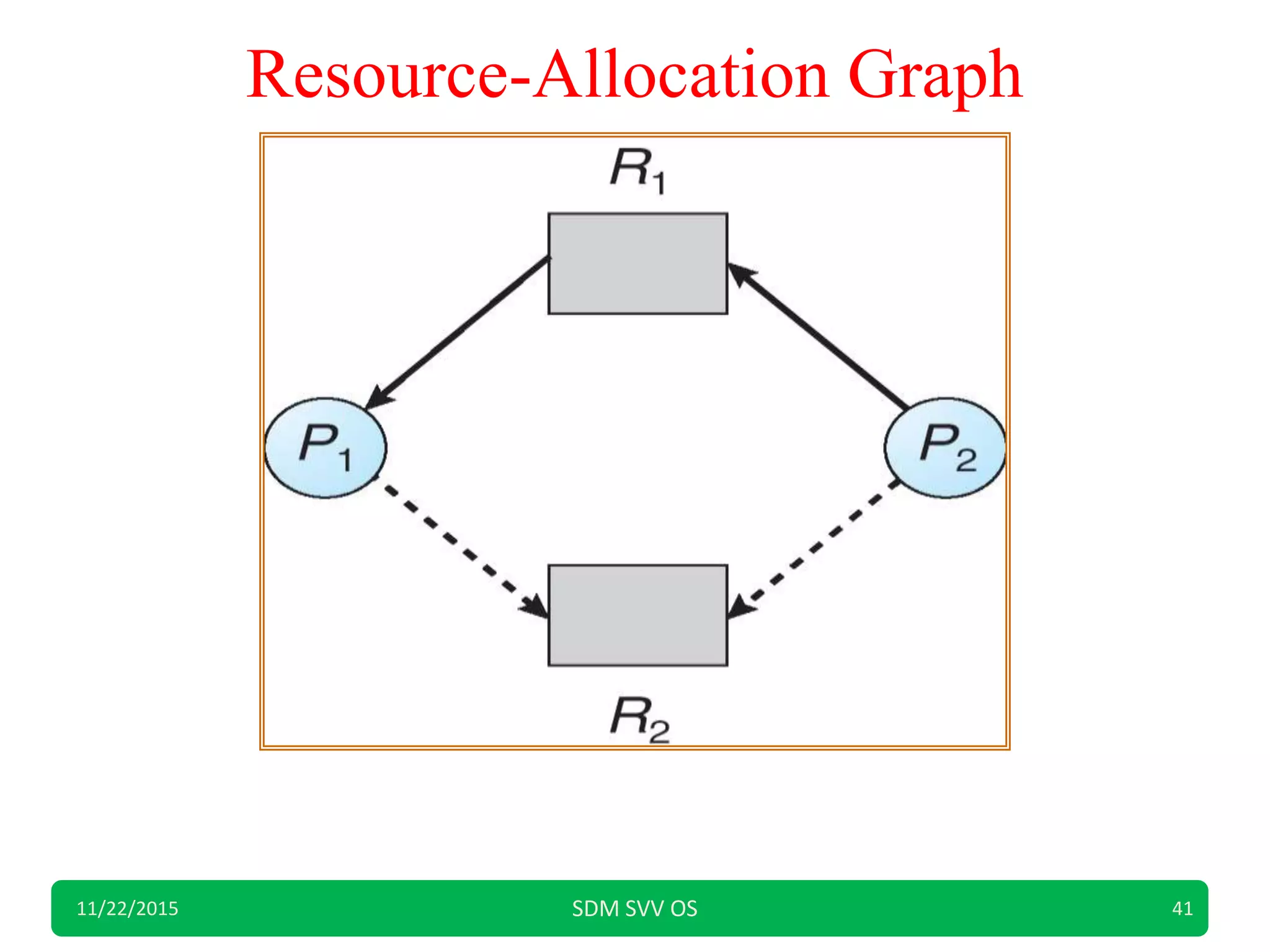
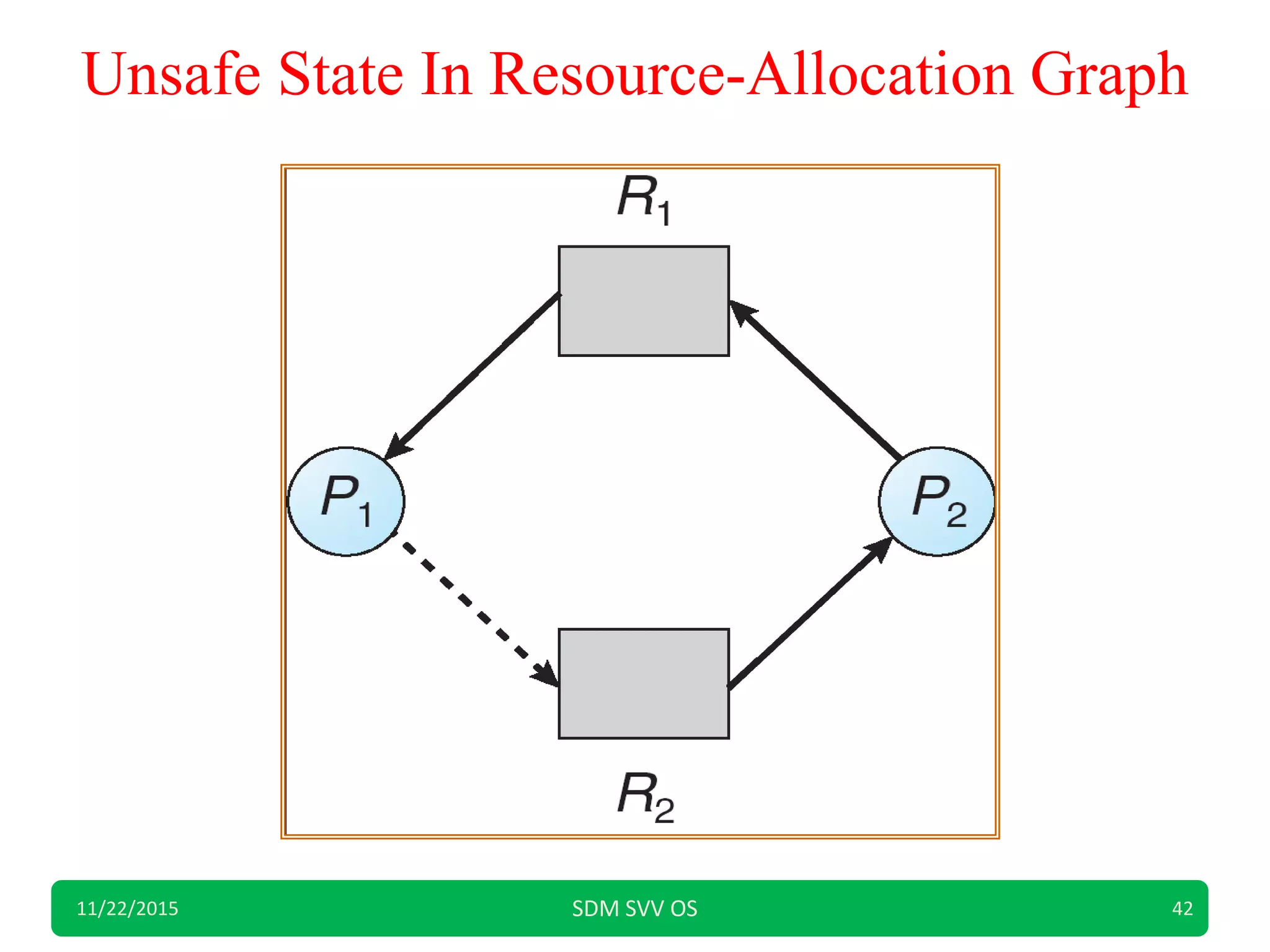

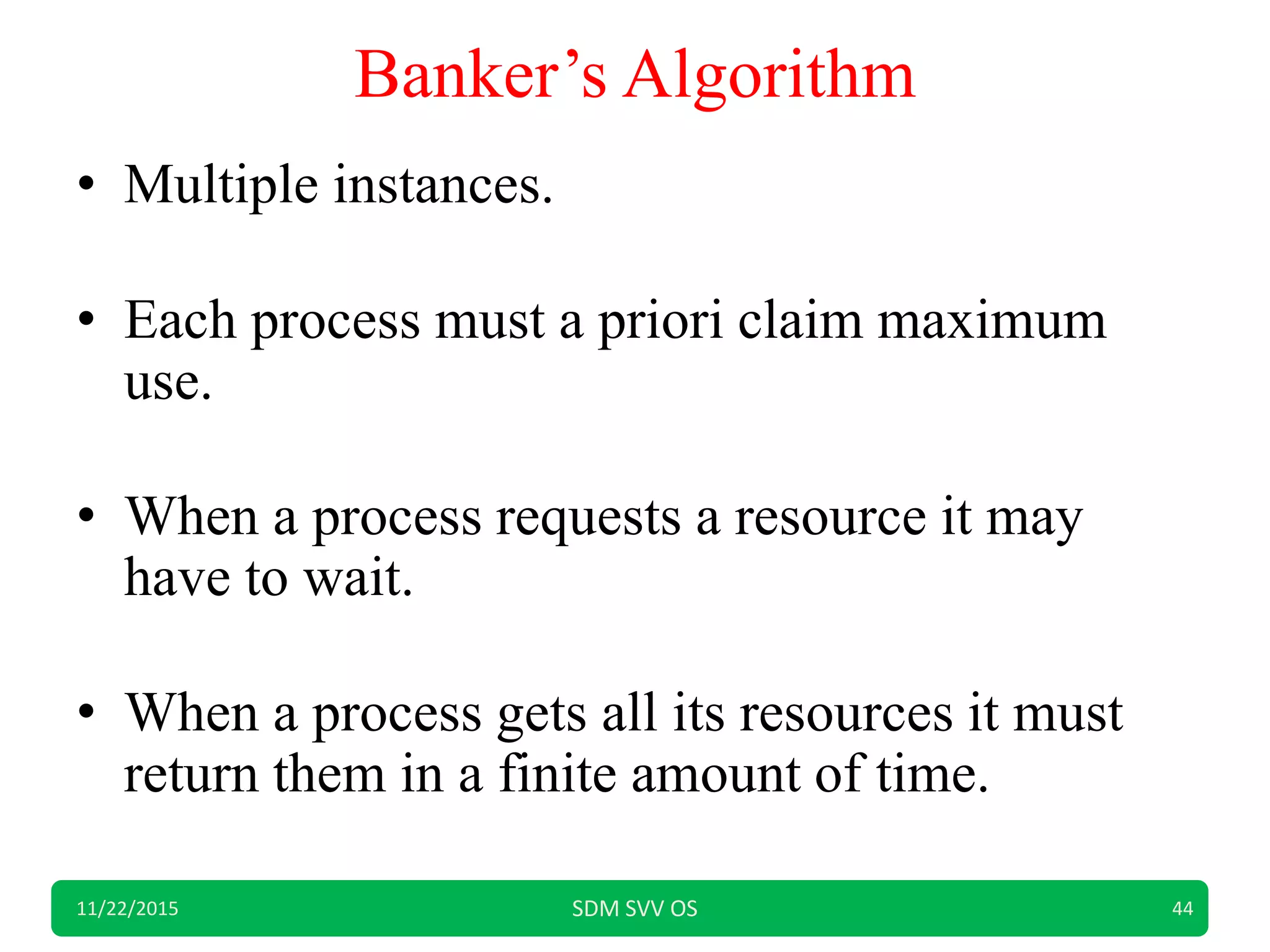
![Data Structures for the Banker’s Algorithm
• Available: Vector of length m. If available [j] = k,
there are k instances of resource type Rj available.
• Max: n x m matrix. If Max [i,j] = k, then process
Pi may request at most k instances of resource
type Rj.
• Allocation: n x m matrix. If Allocation[i,j] = k
then Pi is currently allocated k instances of Rj.
• Need: n x m matrix. If Need[i,j] = k, then Pi may
need k more instances of Rj to complete its task.
Need [i,j] = Max[i,j] – Allocation [i,j].
11/22/2015 SDM SVV OS 45
Data Structures for the Banker’s Algorithm](https://image.slidesharecdn.com/ossvv62015-151122050215-lva1-app6892/75/Deadlock_SVVSDM_DWD-45-2048.jpg)
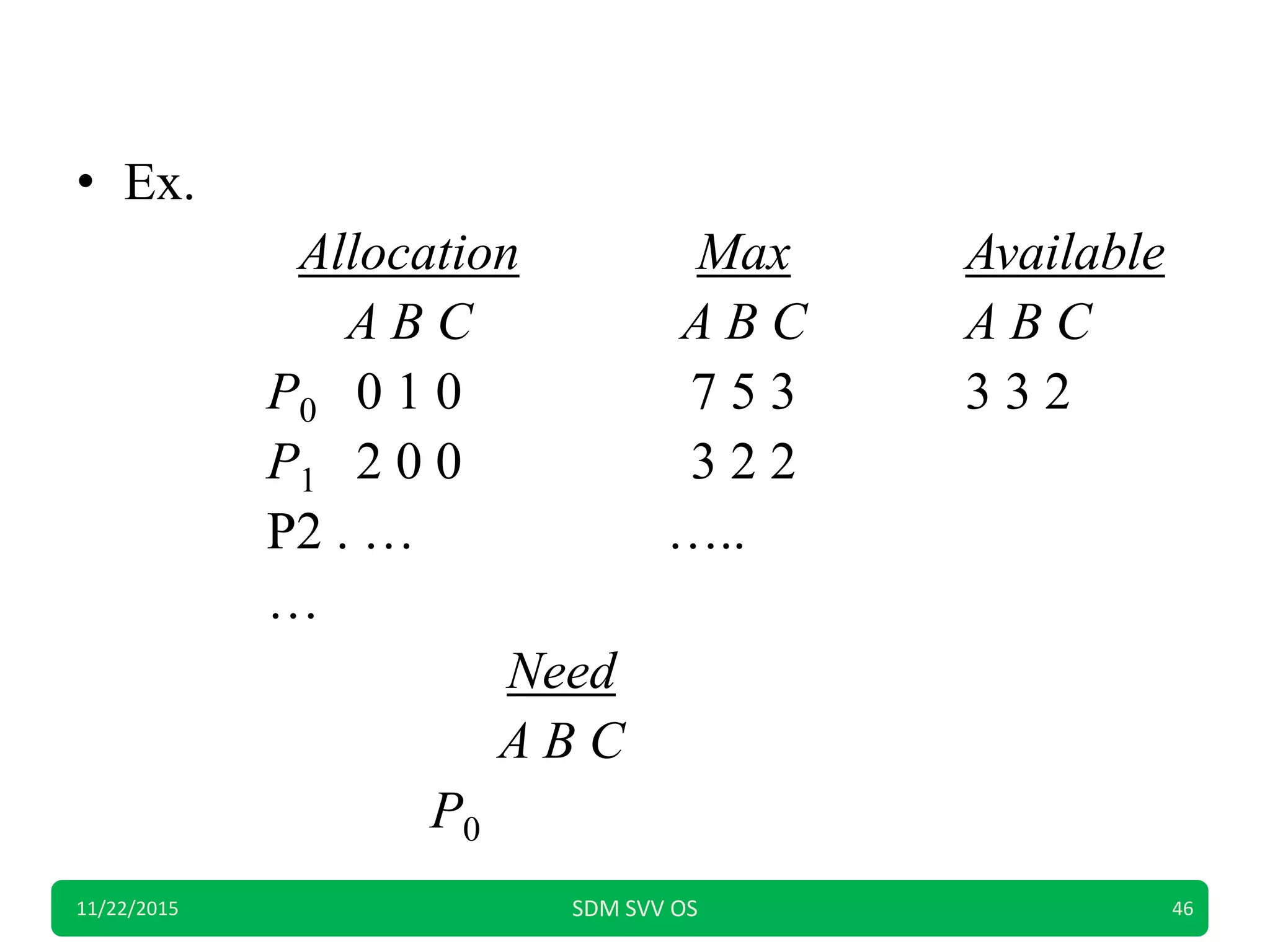
![Safety Algorithm
1.Let Work and Finish be vectors of length m and
n, respectively. Initialize:
Work = Available
Finish [i] = false for i = 0, 1, …, n- 1.
2.Find an i such that both:
(a) Finish [i] = false
(b) Needi Work
If no such i exists, go to step 4.
3.Work = Work + Allocationi
Finish[i] = true
go to step 2.
4.If Finish [i] == true for all i, then the system is in
a safe state.
11/22/2015 SDM SVV OS 47](https://image.slidesharecdn.com/ossvv62015-151122050215-lva1-app6892/75/Deadlock_SVVSDM_DWD-47-2048.jpg)
![Resource-Request Algorithm for Process Pi
Requesti = request vector for process Pi. If
Requesti [j] = k then process Pi wants k
instances of resource type Rj.
When a request for resources is made by process
Pi, the following actions are taken:
1.If Requesti Needi go to step 2. Otherwise, raise
error condition, since process has exceeded its
maximum claim.
2.If Requesti Available, go to step 3. Otherwise Pi
must wait, since resources are not available.
11/22/2015 SDM SVV OS 48](https://image.slidesharecdn.com/ossvv62015-151122050215-lva1-app6892/75/Deadlock_SVVSDM_DWD-48-2048.jpg)
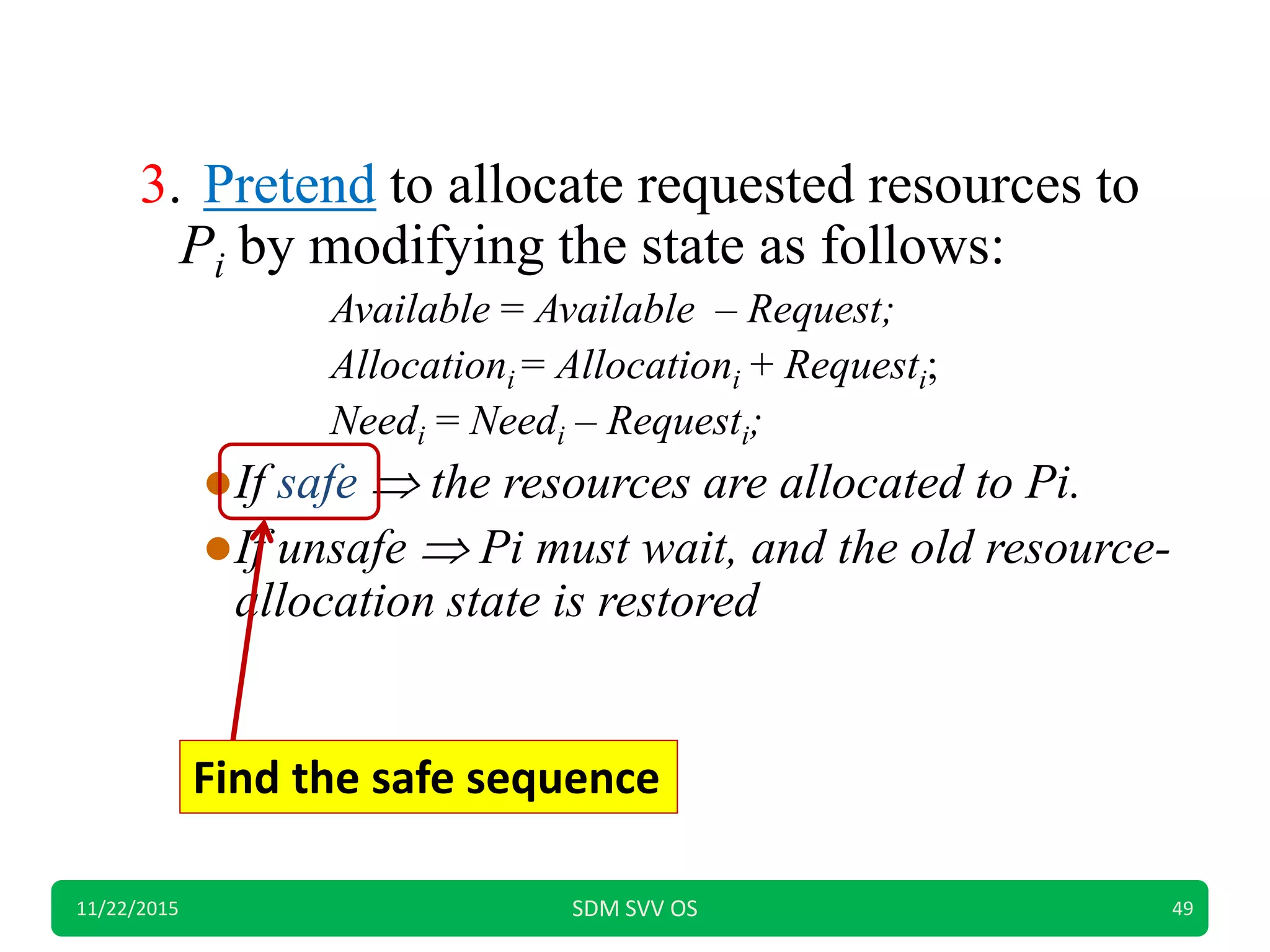
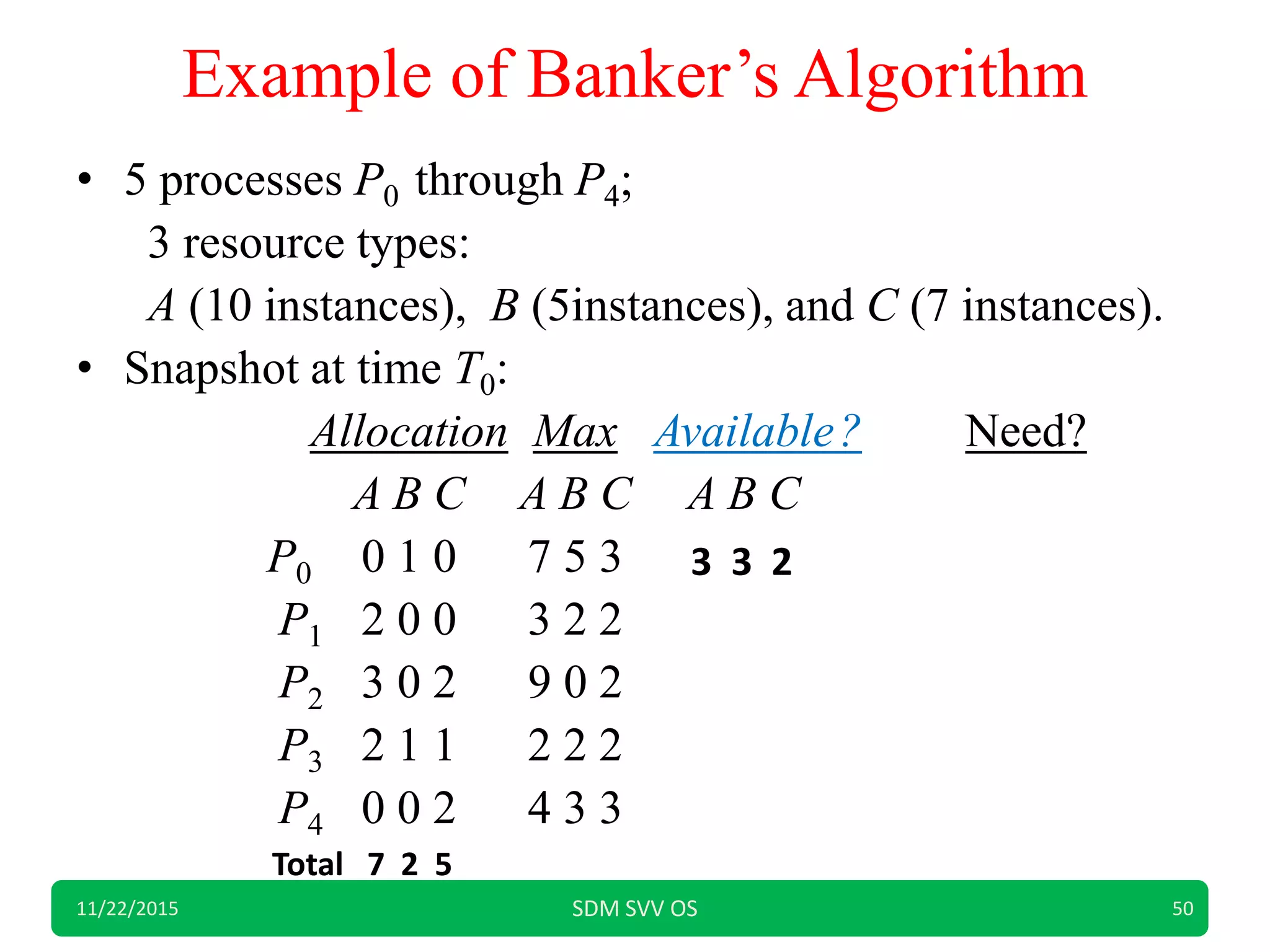
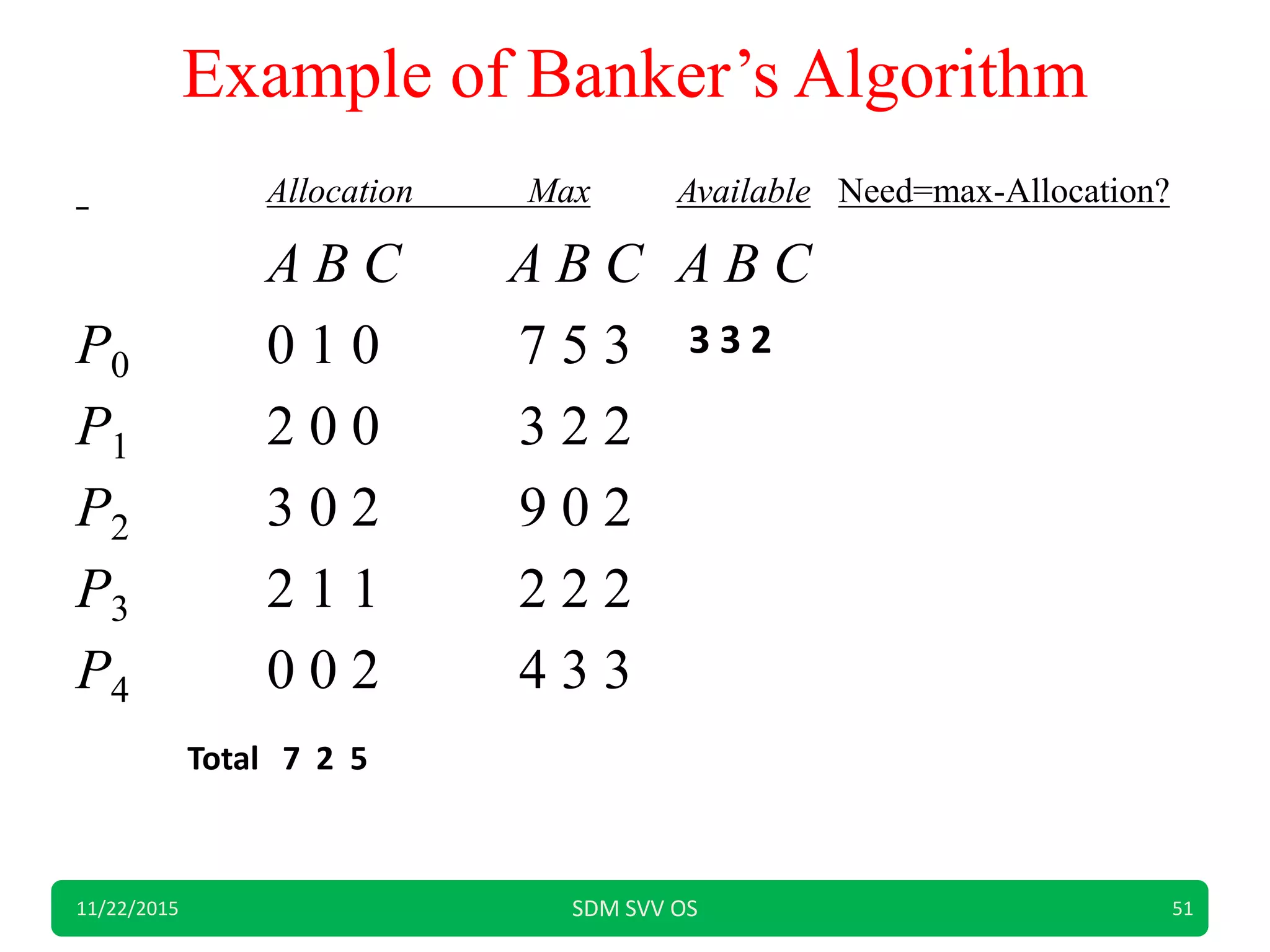
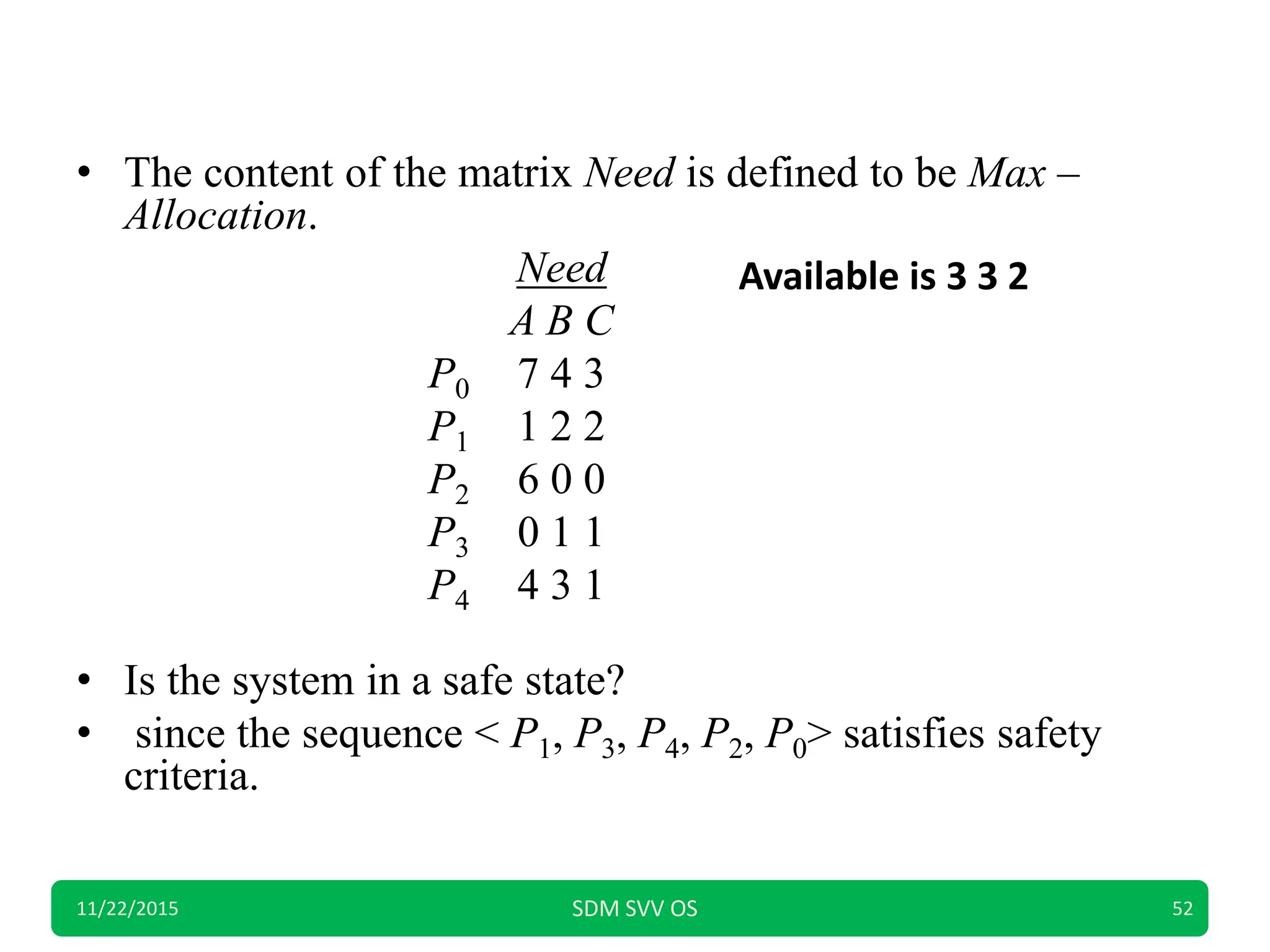
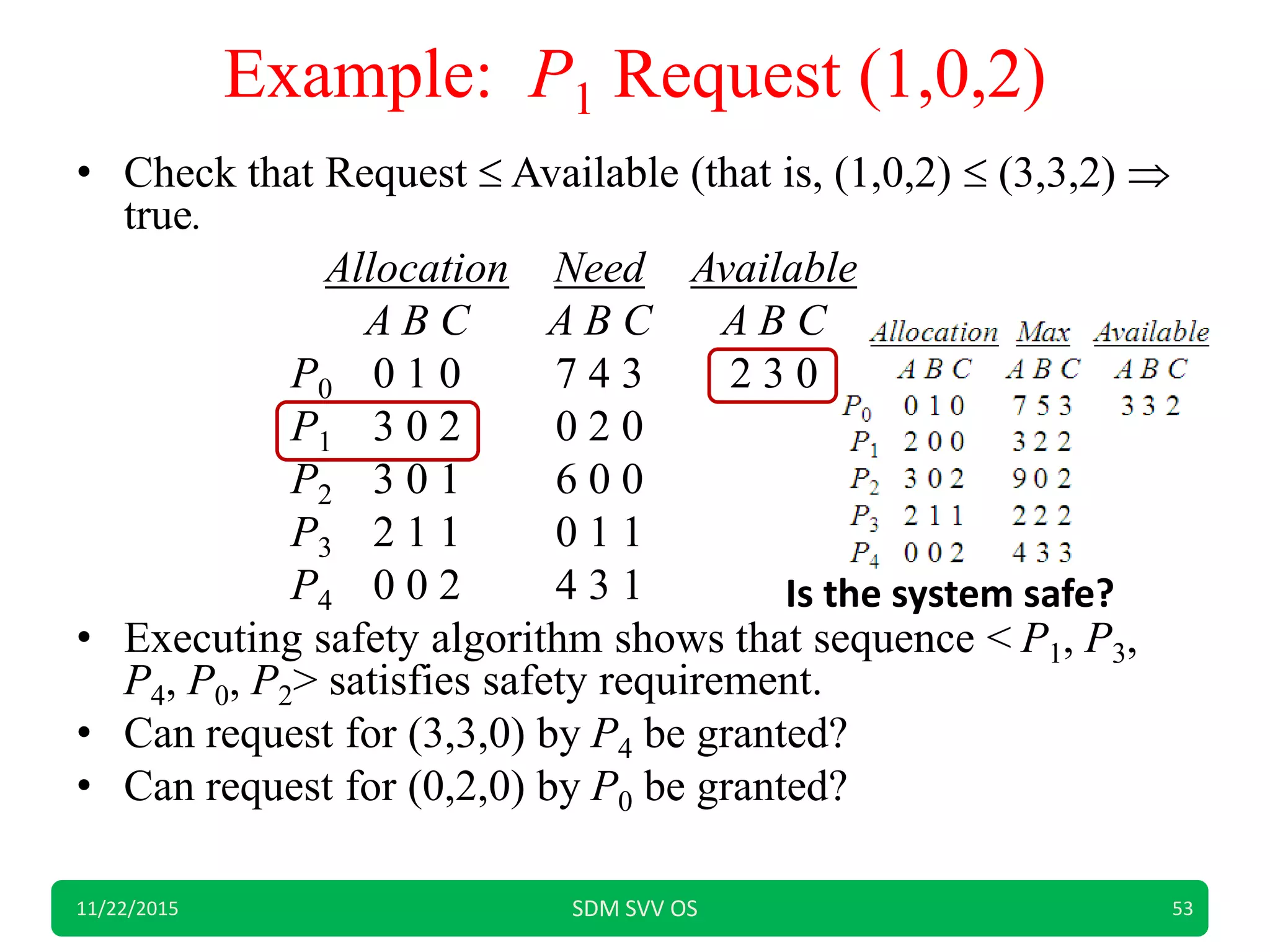
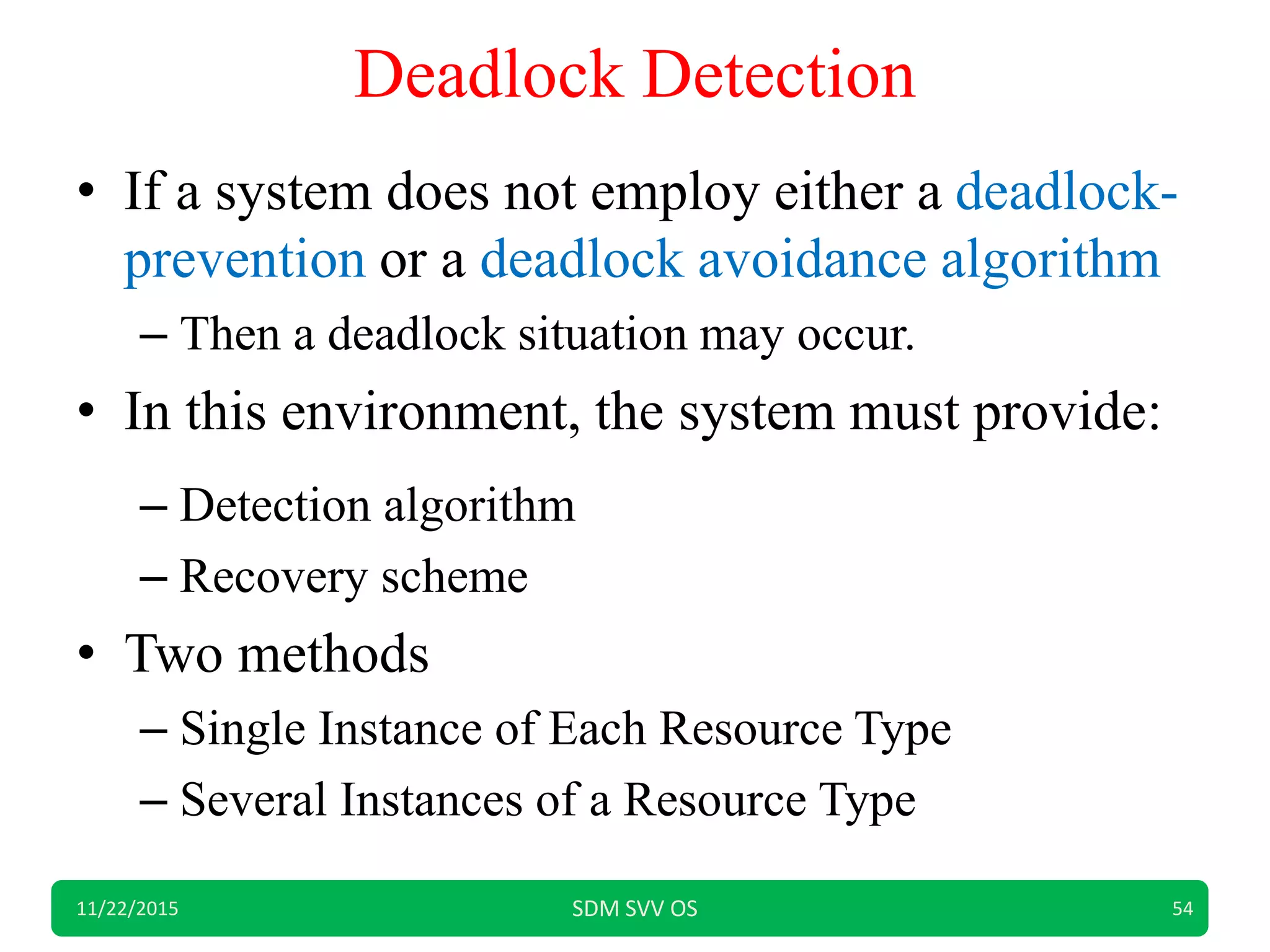
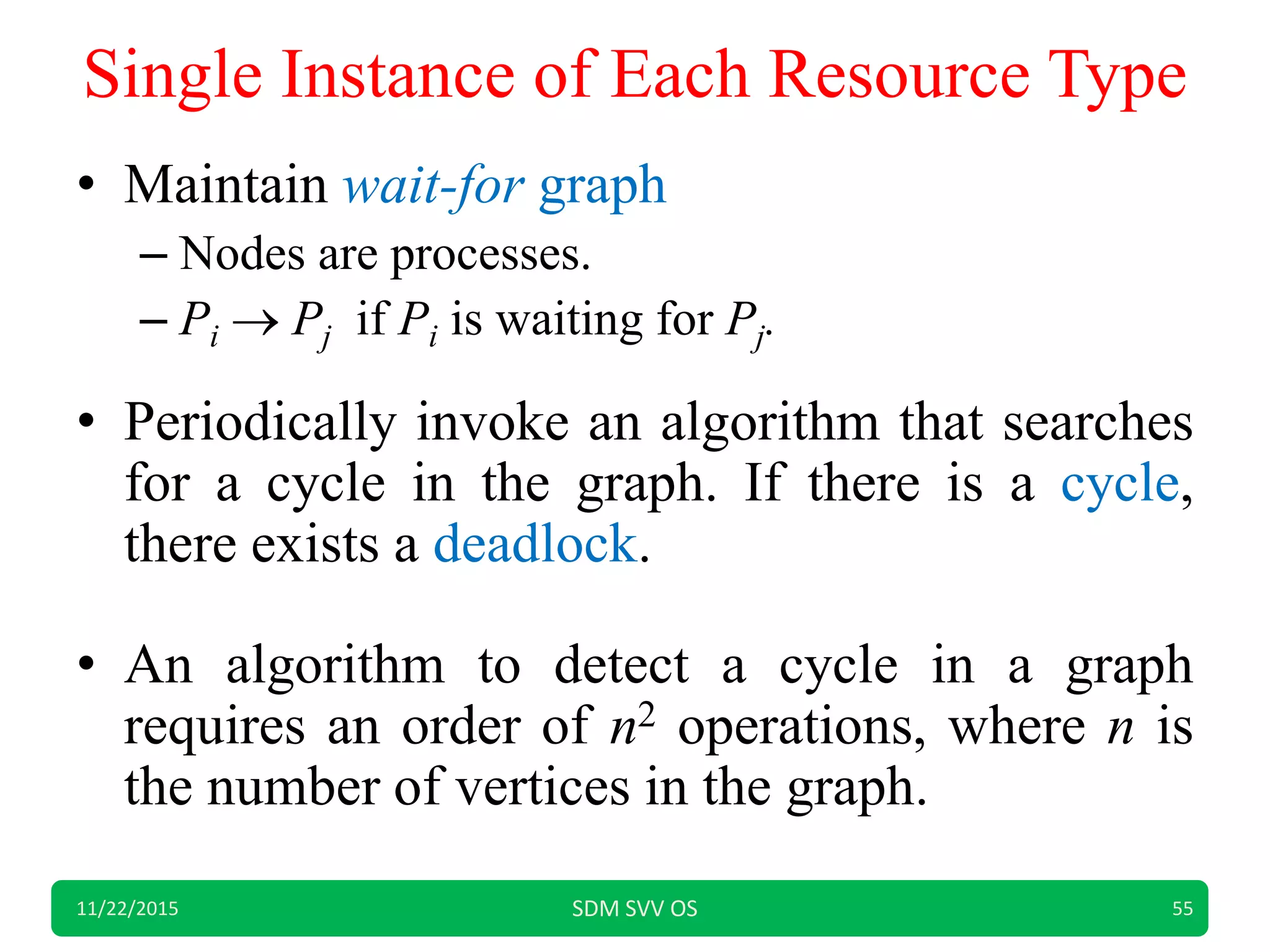
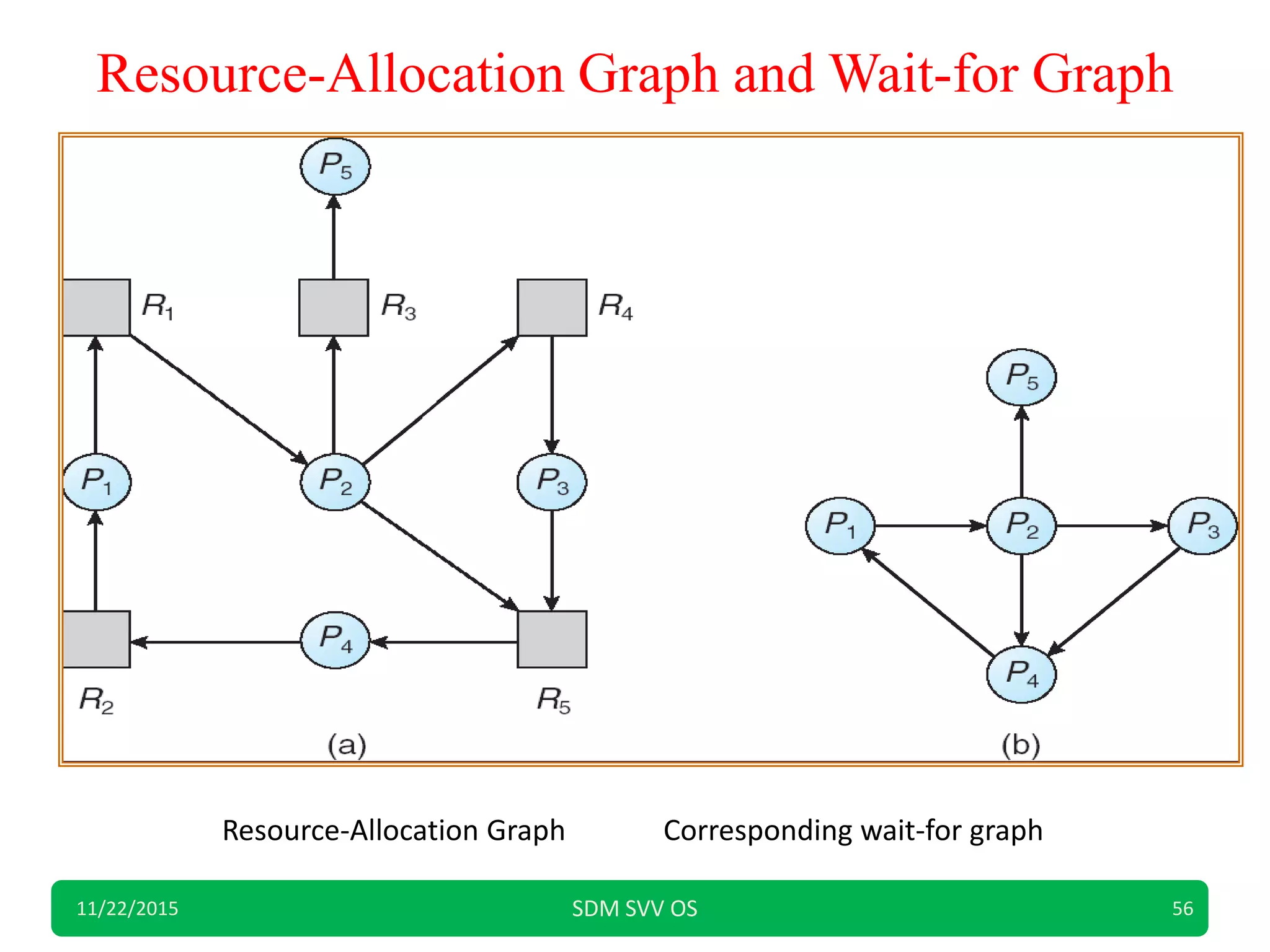
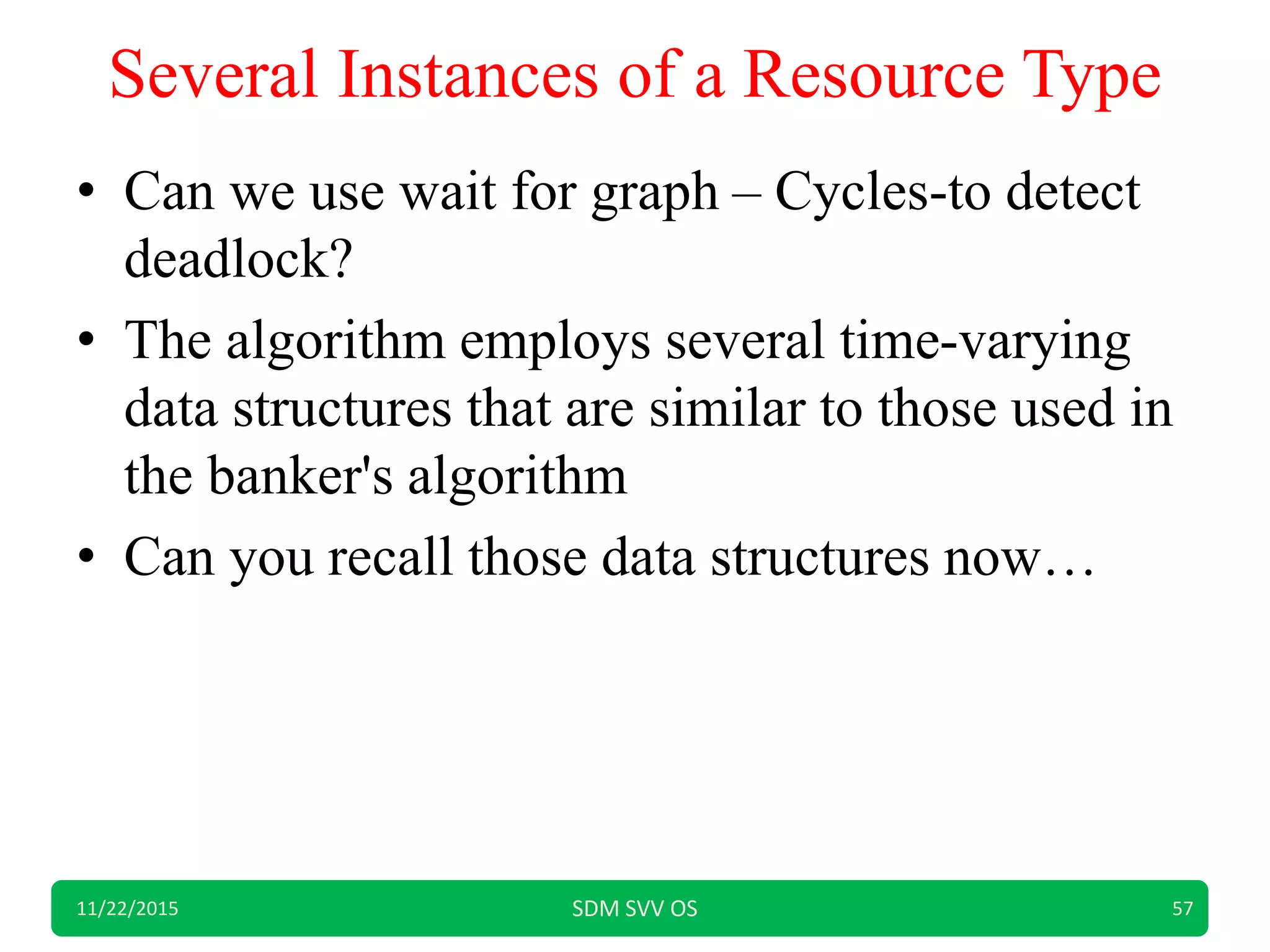
![Several Instances of a Resource Type
• Available: A vector of length m indicates the
number of available resources of each type.
• Allocation: An n x m matrix defines the number
of resources of each type currently allocated to
each process.
Request: An n x m matrix indicates the current
request of each process. If Request [ij] = k, then
process Pi is requesting k more instances of
resource type. Rj.
11/22/2015 SDM SVV OS 58](https://image.slidesharecdn.com/ossvv62015-151122050215-lva1-app6892/75/Deadlock_SVVSDM_DWD-58-2048.jpg)
![Detection Algorithm
1.Let Work and Finish be vectors of length m
and n, respectively Initialize:
(a) Work = Available
(b)For i = 1,2, …, n, if Allocationi 0, then
Finish[i] = false; otherwise, Finish[i] = true.
2.Find an index i such that both:
(a) Finish[i] == false
(b)Requesti Work
If no such i exists, go to step 4.
11/22/2015 SDM SVV OS 59](https://image.slidesharecdn.com/ossvv62015-151122050215-lva1-app6892/75/Deadlock_SVVSDM_DWD-59-2048.jpg)
![3.Work = Work + Allocationi
Finish[i] = true
go to step 2.
4.If Finish[i] == false, for some i, 1 i n, then
the system is in deadlock state. Moreover, if
Finish[i] == false, then Pi is deadlocked.
11/22/2015 SDM SVV OS 60
Algorithm requires an order of (m x n2)operations to detect
whether the system is in deadlocked state.](https://image.slidesharecdn.com/ossvv62015-151122050215-lva1-app6892/75/Deadlock_SVVSDM_DWD-60-2048.jpg)
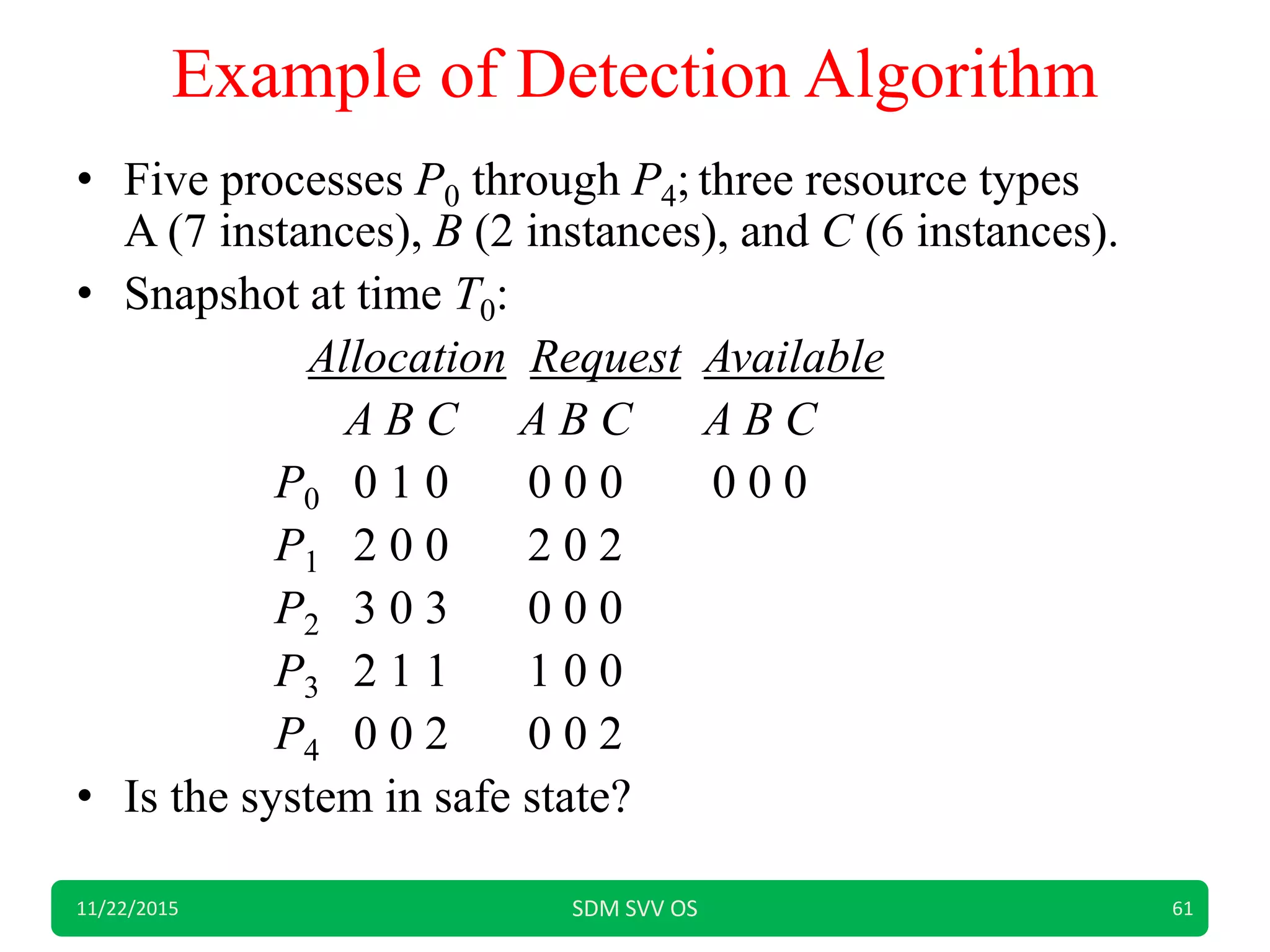
![Example of Detection Algorithm
• Five processes P0 through P4; three resource types
A (7 instances), B (2 instances), and C (6 instances).
• Snapshot at time T0:
AllocationRequest Available
A B C A B C A B C
P0 0 1 0 0 0 0 0 0 0
P1 2 0 0 2 0 2
P2 3 0 3 0 0 0
P3 2 1 1 1 0 0
P4 0 0 2 0 0 2
• Sequence <P0, P2, P3, P1, P4> will result in Finish[i] =
true for all i.
11/22/2015 SDM SVV OS 62](https://image.slidesharecdn.com/ossvv62015-151122050215-lva1-app6892/75/Deadlock_SVVSDM_DWD-62-2048.jpg)
![Example of Detection Algorithm
Allocation Request Available (7 2 6)
A B C A B C A B C
P0 0 1 0 0 0 0 0 0 0
P1 2 0 0 2 0 2
P2 3 0 3 0 0 0
P3 2 1 1 1 0 0
P4 0 0 2 0 0 2
• Sequence <P0,P2,P3-P1, P4> will result in
Finish[i] = true for all i.
11/22/2015 SDM SVV OS 63
Process completion
P0- 0 1 0
P2-3 1 3
P3-5 2 4
P1-7 2 4
P4-7 2 6](https://image.slidesharecdn.com/ossvv62015-151122050215-lva1-app6892/75/Deadlock_SVVSDM_DWD-63-2048.jpg)
